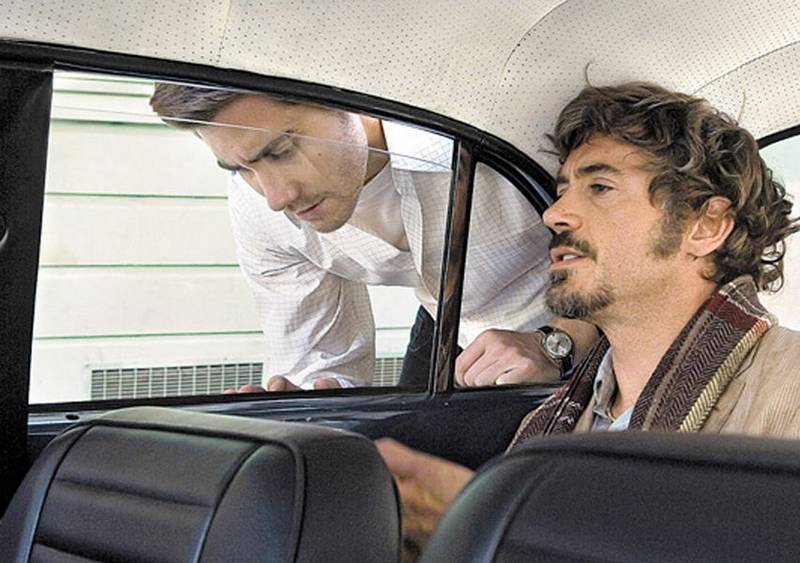
A cartoonist (Jake Gyllenhaal, left) teams up with an ace reporter (Robert Downey Jr.) to track down an elusive serial killer in Zodiac. Director David Fincher, an elegant stylist, finds the right pace and style for a story about persistence in the face of evil.
‘Zodiac” is the “All the President’s Men” of serial killer movies, with Woodward and Bernstein played by a cop and a cartoonist. It’s not merely “based” on California’s infamous Zodiac killings, but seems to exude the very stench and provocation of the case. The killer, who was never caught, generously supplied so many clues that Sherlock Holmes might have cracked the case in his sitting room. But only a newspaper cartoonist was stubborn enough, and tunneled away long enough, to piece together a convincing case against a man who was perhaps guilty.
The film is a police procedural crossed with a newspaper movie, but free of most of the cliches of either. Its most impressive accomplishment is to gather a bewildering labyrinth of facts and suspicions over a period of years, and make the journey through this maze frightening and suspenseful. I could imagine becoming hopelessly mired in the details of the Zodiac investigation, but director David Fincher (“ Seven “) and his writer, James Vanderbilt , find their way with clarity through the murk. In a film with so many characters, the casting by Laray Mayfield is also crucial; like the only eyewitness in the case, we remember a face once we’ve seen it.
The film opens with a sudden, brutal, bloody killing, followed by others not too long after — five killings the police feel sure Zodiac committed, although others have been attributed to him. But this film will not be a bloodbath. The killer does his work in the earlier scenes of the film, and then, when he starts sending encrypted letters to newspapers, the police and reporters try to do theirs.
The two lead inspectors on the case are David Toschi ( Mark Ruffalo ) and William Armstrong ( Anthony Edwards ). Toschi, famous at the time, tutored Steve McQueen for “ Bullitt ” and was the role model for Clint Eastwood’s Dirty Harry. Ruffalo plays him not as a hotshot but as a dogged officer who does things by the book because he believes in the book. Edwards’ character, his partner, is more personally worn down by the sheer vicious nature of the killer and his taunts.
At the San Francisco Chronicle , although we meet several staffers, the key players are ace reporter Paul Avery ( Robert Downey Jr., bearded, chain-smoking, alcoholic) and editorial cartoonist Robert Graysmith ( Jake Gyllenhaal ). These characters are real, and indeed the film is based on Graysmith’s books about the case.
I found the newspaper office intriguing in its accuracy. For one thing, it is usually fairly empty, and it was true on a morning paper in those days that the office began to heat up closer to deadline Among the few early arrivals would have been the cartoonist, who was expected to work up a few ideas for presentation at the daily news meeting, and the office alcoholics, perhaps up all night, or already starting their recovery drinking. Yes, reporters drank at their desks 40 years ago, and smoked and smoked and smoked.
Graysmith is new on the staff when the first cipher arrives. He’s like the curious new kid in school fascinated by the secrets of the big boys. He doodles with a copy of the cipher, and we think he’ll solve it, but he doesn’t. He strays off his beat by eavesdropping on cops and reporters, making friends with the boozy Avery, and even talking his way into police evidence rooms. Long after the investigation has cooled, his obsession remains, eventually driving his wife ( Chloe Sevigny ) to move herself and their children in with her mom. Graysmith seems oblivious to the danger he may be drawing into his home, even after he appears on TV and starts hearing heavy breathing over the phone.
What makes “Zodiac” authentic is the way it avoids chases, shootouts, grandstanding and false climaxes, and just follows the methodical progress of police work. Just as Woodward and Bernstein knocked on many doors and made many phone calls and met many very odd people, so do the cops and Graysmith walk down strange pathways in their investigation. Because Graysmith is unarmed and civilian, we become genuinely worried about his naivete and risk-taking, especially during a trip to a basement that is, in its way, one of the best scenes I’ve ever seen along those lines.
Fincher gives us times, days and dates at the bottom of the screen, which serve only to underline how the case seems to stretch out to infinity. There is even time-lapse photography showing the Transamerica building going up. Everything leads up to a heart-stopping moment when two men look, simply look, at one another. It is a more satisfying conclusion than Dirty Harry shooting Zodiac dead, say, in a football stadium.
Fincher is not the first director you would associate with this material. In 1992, at 30, he directed “Alien 3,” which was the least of the Alien movies, but even then had his eye (“Alien 3” is one of the best-looking bad movies I have ever seen). His credits include “Se7en” (1995), a superb film about another serial killer with a pattern to his crimes; “ The Game ” (1997), with Michael Douglas caught in an ego-smashing web; “ Fight Club ” (1999), beloved by most, not by me; the ingenious terror of Jodie Foster in “ Panic Room ” (2002), and now, five years between features, his most thoughtful, involving film.
He seems to be in reaction against the slice-and-dice style of modern crime movies; his composition and editing are more classical, and he doesn’t use nine shots when one will do. (If this same material had been put through an Avid to chop the footage into five times as many shots, we would have been sending our own ciphers to the studio.) Fincher is an elegant stylist on top of everything else, and here he finds the right pace and style for a story about persistence in the face of evil. I am often fascinated by true crime books, partly because of the way they amass ominous details (the best I’ve read is Blood and Money , by Tommy Thompson ), and Fincher understands that true crime is not the same genre as crime action. That he makes every character a distinct individual is proof of that; consider the attention given to Graysmith’s choice of mixed drink.


Roger Ebert
Roger Ebert was the film critic of the Chicago Sun-Times from 1967 until his death in 2013. In 1975, he won the Pulitzer Prize for distinguished criticism.

- Mark Ruffalo as David Toschi
- Robert Downey Jr. as Paul Avery
- John Carroll Lynch as Arthur Leigh Allen
- Brian Cox as Melvin Belli
- Philip Baker Hall as Sherwood Morrill
- Chloe Sevigny as Melanie
- Anthony Edwards as Armstrong
- Charles Fleischer as Bob Vaughn
- Zach Grenier as Mel Nicolai
- Dermot Mulroney as Capt. Marty Lee
- Jake Gyllenhaal as Robert Graysmith
- Elias Koteas as Sgt. Jack Mulanax
Directed by
- David Fincher
- James Vanderbilt
Based on the book by
- Robert Graysmith
Leave a comment
Now playing.
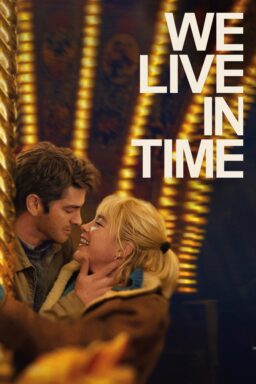
We Live in Time
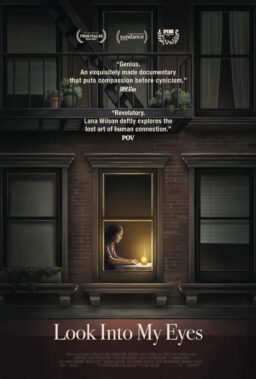
Look Into My Eyes
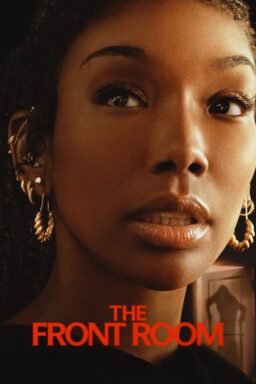
The Front Room
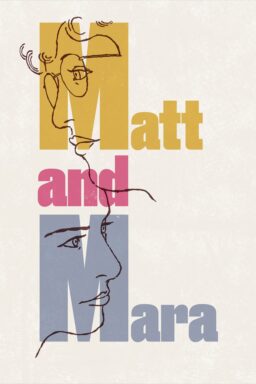
Matt and Mara
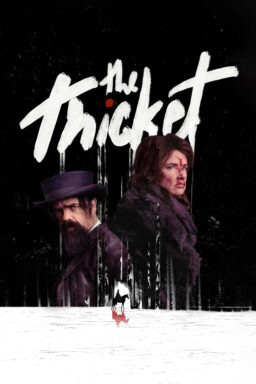
The Thicket
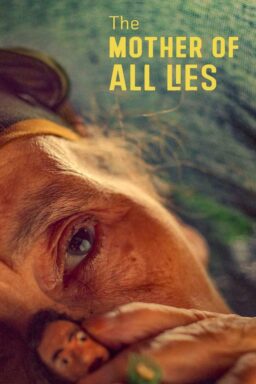
The Mother of All Lies
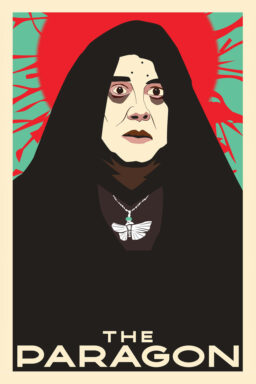
The Paragon
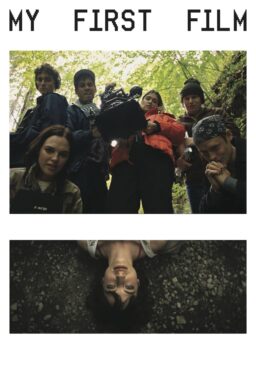
My First Film
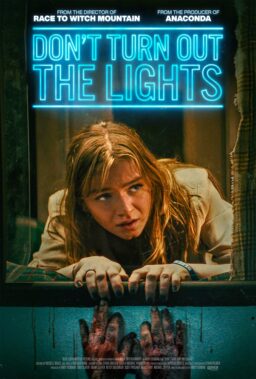
Don’t Turn Out the Lights
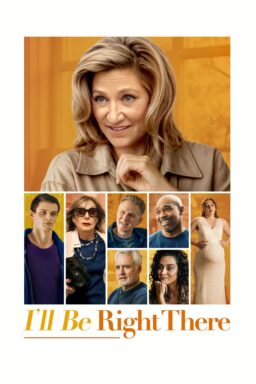
I’ll Be Right There
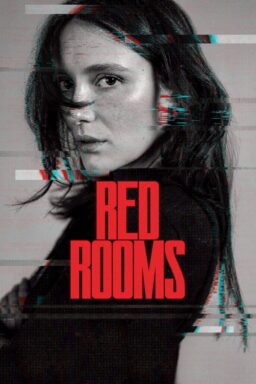
The Greatest of All Time
Latest articles.

TIFF 2024: Bonjour Tristesse, The Fire Inside, The Last Showgirl
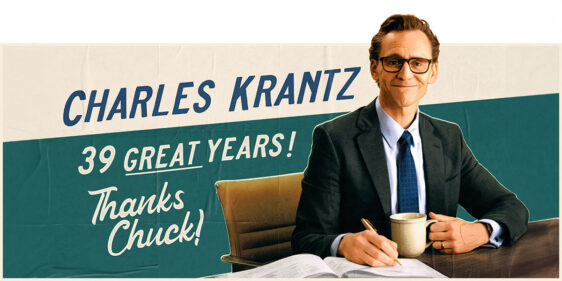
TIFF 2024: The Life of Chuck, Nightbitch, K-Pops
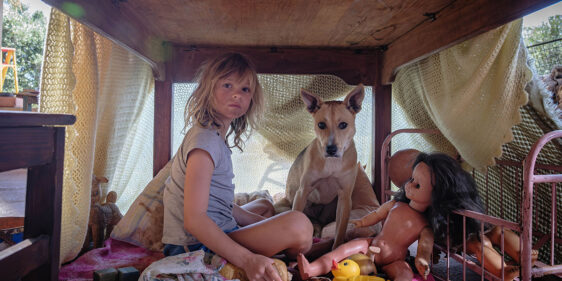
TIFF 2024: Don’t Let’s Go to the Dogs Tonight, Sharp Corner, The Quiet Ones
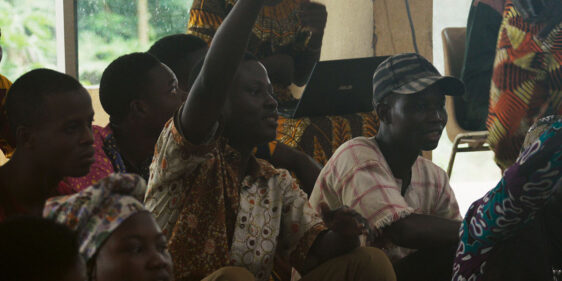
TIFF 2024: Dahomey, Bird, Oh Canada
The best movie reviews, in your inbox.
- Share full article
Advertisement
Supported by
Movie Review | 'Zodiac'
Hunting a Killer as the Age of Aquarius Dies

By Manohla Dargis
- March 2, 2007
David Fincher’s magnificently obsessive new film, “Zodiac,” tracks the story of the serial killer who left dead bodies up and down California in the 1960s and possibly the ’70s, and that of the men who tried to stop him. Set when the Age of Aquarius disappeared into the black hole of the Manson family murders, the film is at once sprawling and tightly constructed, opaque and meticulously detailed. It’s part police procedural, part monster movie, a funereal entertainment that is an unexpected repudiation of Mr. Fincher’s most famous movie, the serial-killer fiction “Seven,” as well as a testament to this cinematic savant’s gifts.
Informed by history and steeped in pulp fiction, “Zodiac” stars a trio of beauties — Jake Gyllenhaal, Robert Downey Jr. and Mark Ruffalo — all at the top of their performance game and captured in out-of-sight high-definition digital by the cinematographer Harris Savides. Mr. Gyllenhaal is the sneaky star of the show as the real-life cartoonist turned writer Robert Graysmith, though he doesn’t emerge from the wings until fairly late, after the bodies and the investigations have cooled. A silky, seductive Mr. Downey plays Paul Avery, a showboating newspaper reporter who chased the killer in print, while Mr. Ruffalo struts his estimable stuff as Dave Toschi, the San Francisco police detective who taught Steve McQueen how to wear a gun in “Bullitt” and pursued Zodiac close to the ground.
The relative unknown James Vanderbilt wrote the jigsaw-puzzle screenplay, working from Mr. Graysmith’s exhaustive, exhausting true-crime accounts of the murders and their investigations, “Zodiac” and “Zodiac Unmasked.” Mr. Graysmith, coyly played by Mr. Gyllenhaal as something of an overgrown Hardy Boy, his great big eyes matched by his great big ambition, was a political cartoonist doodling Nixon noses at The San Francisco Chronicle when Zodiac started sending letters and ciphers to the paper, divulging intimate knowledge of the crimes. The first messages arrived in 1969, the year Zodiac shot one young couple and knifed another in separate Northern California counties before moving on to San Francisco, where he put a bullet in the head of a cabbie.
The first cipher stumped an alphabet soup of law enforcement agencies, including the C.I.A. and F.B.I., but was cracked by a California schoolteacher and his wife. The decoded cipher opened with an ominous and crudely effective flourish: “I like killing people because it is so much fun it is more fun than killing wild game in the forrest because man is the most dangeroue anamal.” The letters, the misspellings and the lax punctuation kept coming, and perhaps so did the murders, though only five were substantively linked to him. A publicity hound, Zodiac claimed responsibility for murders he might not have committed, a habit that added to a boogeyman mystery and myth that chroniclers of his crimes, including Mr. Graysmith, have exploited.
Mr. Fincher made his name with “Seven,” a thriller in which the grotesquely mutilated bodies of murder victims are nothing more than lovingly designed props. Although more than capable of adding to the exploitation annals, he is up to something profoundly different in this film, which opens with the shooting of two people parked on a lovers’ lane at night, an attack that is soon followed by a squirmingly visceral knife assault on a couple during a daytime idyll. By front-loading the violence, Mr. Fincher instantly makes it clear just what kind of murderer this was — one who liked to get his hands wet — and ensures that the murders don’t become the story’s payoff, our reward for all the time stamps, geographic shifts, narrative complication and frustrated action.
The story structure is as intricate as the storytelling is seamless, with multiple time-and-place interludes neatly slotted into two distinct sections. The first largely concerns the murders and the investigations; the second, far shorter one involves Graysmith’s transformation of the murders and the investigations into a narrative. With its nicotine browns, the first section, which opens in 1969 and continues through the mid-’70s, looks as if it had been art-directed by a roomful of chain smokers. Dark and moody, like all of Mr. Fincher’s work, this part has been drained of almost all bright colors, save for splashes of yellow, the color of safety and caution, and an alarming-looking blue elixir called an Aqua Velva that is Graysmith’s bar drink of choice.
The second, more vibrantly hued section begins with Graysmith sitting in the Chronicle newsroom, its yellow pillars now painted blue. He looks as bright and bushy-tailed as the day he read Zodiac’s first letter, though now he comes equipped with three kids and a wife (an unfortunately familiar scold whom Chloë Sevigny imbues with some welcome wit). But there are demons still loose, inside and out, which is why Graysmith takes on Zodiac alone, warming up the stone-cold case. Domestic tranquillity, it seems, can’t hold a candle to work, to the fanatical pursuit of meaning and self-discovery, to finding out what makes you and the world tick — which is why, while “Zodiac” contains multitudes (genres, jokes, nods at 1970s New Hollywood), it feels like Mr. Fincher’s most personal film to date.
Maybe that’s why it doesn’t have the usual movie-made shrink- rapping and beard-stroking, as in Mommy was a castrating shrew and Daddy used a two-by-four as a paddle. Throughout the film Mr. Fincher and company keep focus on Zodiac’s crimes, on the nuts and bolts of his deeds, rather than on the nurture and nature behind them. There is no normalizing psychology here, and no deep-dish symbolism either, maybe because the title crazy is so peculiarly fond of symbols, which he sprinkles in his missives and, for one murder, wears superhero style on a black-hooded costume that makes him look like a portly ninja in a Z-movie quickie. It’s no wonder the victims don’t see the threat behind the masquerade until it’s too late.
Psychology isn’t Mr. Fincher’s bag; he isn’t interested in what lies and writhes beneath, but what is right there: the visible evidence. And what beautiful evidence it is. His polished technique can leave you slack-jawed, as can his scrupulous attention to detail: the peeling walls of a derelict building in “Fight Club,” the rows of ant-size letters marching across the pages of a composition notebook in “Seven,” the bruises splashed across a woman’s arm in “Zodiac.” There is mystery in this minutiae, not just virtuosity, and maybe, to judge from reports of his painstaking process, a touch of madness. Like his detectives and journalists, Mr. Fincher seems possessed by the need to recreate reality — to revisit the scene of the crime — piece by piece.
There’s a moment early in the film when Mr. Downey stands in the Chronicle newsroom, back arched and rear gently hoisted, affecting a posture that calls to mind Gene Kelly done up as a Toulouse-Lautrec jockey in “An American in Paris.” Avery has already started his long slip-slide into boozy oblivion, abetted by toots of coke, but as he strides around the newsroom, motored by talent and self-regard, he is the guy everybody else wants to be or wants to have. Like Mr. Ruffalo’s detective, who leaves everything bobbing in his rapid wake, Mr. Downey fills the screen with life that, by its very nature, is a rebuke to the death drive embodied by the Zodiac killer. Rarely has a film with so much blood on its hands seemed so insistently alive.
“Zodiac” is rated R (Under 17 requires accompanying parent or adult guardian). It contains extremely graphic gun and knife violence, as well as alcohol abuse and cocaine use.
Opens today nationwide.
Directed by David Fincher; written by James Vanderbilt, based on the books “Zodiac” and “Zodiac Unmasked” by Robert Graysmith; director of photography, Harris Savides; edited by Angus Wall; music by David Shire; production designer, Donald Graham Burt; produced by Mr. Vanderbilt, Mike Medavoy, Arnold W. Messer, Bradley J. Fischer and Cean Chaffin; released by Paramount Pictures. Running time: 158 minutes.
WITH: Jake Gyllenhaal (Robert Graysmith), Mark Ruffalo (Inspector Dave Toschi), Robert Downey Jr. (Paul Avery), Anthony Edwards (Inspector Bill Armstrong), Brian Cox (Melvin Belli), Elias Koteas (Sgt. Jack Mulanax) and Chloë Sevigny (Melanie).

Inspector Crimes
The Zodiac Killer: Unraveling the Mystery on Screen

Introduction
Dive into the enigmatic tale of “The Zodiac Killer,” a gripping film that masterfully blends horror, mystery, and true crime elements to recount the chilling story of one of America’s most elusive serial killers. Explore the dark history and the cinematic journey that brings this unsolved mystery to life.
View this post on Instagram A post shared by Inspector Crimes (@inspectorcrimes)
Background: A Real-Life Horror Story
The real-life Zodiac Killer, a shadow that haunted Northern California in the late 1960s and early ’70s, is a figure shrouded in mystery. The movie draws inspiration from the killer’s enigmatic ciphers and taunting letters, which you can explore in detail at the FBI’s Zodiac Killer case file .
Plot Overview: A Tangled Web of Clues
“The Zodiac Killer” intricately weaves the stories of detectives, journalists, and everyday citizens caught in the web of an elusive predator. The film skillfully portrays the frustrations and obsessions associated with one of America’s most baffling cases. Learn more about the real investigations from San Francisco Chronicle’s coverage.
Cinematic Elements: Crafting Suspense
The film’s use of lighting and shadow creates an atmosphere filled with suspense and unease, a perfect visual representation of the story’s essence. For a deeper understanding of the film’s visual style, check out this analysis of horror cinematography.

Actors and Their Performances in “Zodiac”
“Zodiac,” directed by David Fincher, features a stellar cast whose performances add profound depth to this dark and intricate story. Here’s a look at the key performances:
- Jake Gyllenhaal as Robert Graysmith: Gyllenhaal delivers a nuanced performance as Robert Graysmith, a cartoonist turned amateur detective. His portrayal captures Graysmith’s descent into obsession with the Zodiac case, showcasing a blend of vulnerability and determination.
- Robert Downey Jr. as Paul Avery: Downey Jr. plays Paul Avery, a reporter covering the Zodiac killings. His portrayal of Avery’s descent from a confident journalist to a man haunted and overwhelmed by the case adds a layer of tragic realism to the film.
- Mark Ruffalo as Inspector Dave Toschi: Ruffalo’s portrayal of Inspector Dave Toschi is marked by a subtle intensity. He successfully conveys Toschi’s professionalism and frustration as the case becomes increasingly complex and elusive.
- Anthony Edwards as Inspector William Armstrong: Edwards provides a grounded and steady performance as Toschi’s partner. His character acts as a counterbalance to Toschi’s intensity, bringing a sense of calm and rationality to the investigation.

Praise from Critics and Audiences
Zodiac” (2007) received widespread acclaim for its meticulous attention to detail, compelling narrative, and exceptional performances. Critics lauded the film for its suspenseful storytelling and director David Fincher’s unique approach to the true crime genre. The performances of Jake Gyllenhaal, Robert Downey Jr., and Mark Ruffalo were particularly praised for their depth and authenticity.
Zodiac Killers Awards and Nominations
While the film did not receive a plethora of awards, its impact was felt strongly in the film community. It garnered nominations from various film festivals and critics’ associations, reinforcing its status as a significant work in Fincher’s filmography and in the true crime genre.
Behind the Scenes Highlights of “Zodiac Killer”

- Reopening of the Case: The film’s release prompted the San Francisco Police Department to reopen the Zodiac case, drawing fresh leads and public interest. Explore more about this development at WhatCulture .
- David Fincher’s Childhood Connection: Director David Fincher’s childhood in Marin County, near the Zodiac Killer’s area, deeply influenced his decision to direct the film.
- Authentic 1970s Recreation: “Zodiac” features meticulous recreation of the 1970s era, enhancing the film’s authenticity.
- Detailed Production Process: Known for his attention to detail, Fincher ensured every aspect of the production was accurate and consistent.
- Real Cryptograms Used: The film includes actual cryptograms from the Zodiac Killer, adding to its realism.
- Filming on Actual Locations: To capture authenticity, “Zodiac” was filmed in locations associated with the Zodiac killer case.
Impact on Popular Culture
This movie has rekindled public interest in the Zodiac case, leading to a resurgence of theories and discussions. The film serves as a haunting reminder of the mysteries that can linger in the shadows of history. Discover more about its cultural impact at Rolling Stone’s feature .

Memorable Quotes from the Movie
- “The truth is always stranger than fiction, but in this case, it’s also more terrifying.”
- “We’re not just hunting a man; we’re hunting a shadow.”
- “Every cipher is a piece of his mind, and we’re here to decode it.”
Frequently Asked Questions (FAQs)
- Was the Zodiac Killer ever caught? No, the Zodiac Killer’s identity remains unknown. Explore more about the ongoing investigations at The Zodiac Revisited .
- How accurate is the film compared to the real events? The film takes creative liberties but stays true to the key elements of the case. For a factual comparison, visit Crime Museum’s Zodiac Killer feature .
- What makes the Zodiac Killer unique among serial killers? The Zodiac’s use of ciphers and taunting letters to the media and police set him apart. Learn more about these aspects at Cipher Mysteries .
- Where can I learn more about the case? For in-depth information, consider reading Robert Graysmith’s book, “Zodiac,” available here .
“The Zodiac Killer” is not just a film; it’s a haunting journey into a chapter of American history that still puzzles and terrifies. It masterfully captures the essence of one of the most enigmatic figures in true crime history, leaving audiences both captivated and disturbed.
For more extensive coverage and expert analysis of harrowing true crime stories, visit Our True Crime Section . Share your insights, and join the conversation in our comments section. Stay updated – subscribe to our newsletter for the latest in true crime.
Share this:
Leave a reply cancel reply, discover more from inspector crimes.
Subscribe now to keep reading and get access to the full archive.
Type your email…
Continue reading
Zodiac (2007)
- User Reviews
Awards | FAQ | User Ratings | External Reviews | Metacritic Reviews
- User Ratings
- External Reviews
- Metacritic Reviews
- Full Cast and Crew
- Release Dates
- Official Sites
- Company Credits
- Filming & Production
- Technical Specs
- Plot Summary
- Plot Keywords
- Parents Guide
Did You Know?
- Crazy Credits
- Alternate Versions
- Connections
- Soundtracks
Photo & Video
- Photo Gallery
- Trailers and Videos
Related Items
- External Sites
Related lists from IMDb users

Recently Viewed
Log in or sign up for Rotten Tomatoes
Trouble logging in?
By continuing, you agree to the Privacy Policy and the Terms and Policies , and to receive email from the Fandango Media Brands .
By creating an account, you agree to the Privacy Policy and the Terms and Policies , and to receive email from Rotten Tomatoes and to receive email from the Fandango Media Brands .
By creating an account, you agree to the Privacy Policy and the Terms and Policies , and to receive email from Rotten Tomatoes.
Email not verified
Let's keep in touch.

Sign up for the Rotten Tomatoes newsletter to get weekly updates on:
- Upcoming Movies and TV shows
- Rotten Tomatoes Podcast
- Media News + More
By clicking "Sign Me Up," you are agreeing to receive occasional emails and communications from Fandango Media (Fandango, Vudu, and Rotten Tomatoes) and consenting to Fandango's Privacy Policy and Terms and Policies . Please allow 10 business days for your account to reflect your preferences.
OK, got it!
- About Rotten Tomatoes®
- Login/signup
Movies in theaters
- Opening This Week
- Top Box Office
- Coming Soon to Theaters
- Certified Fresh Movies
Movies at Home
- Fandango at Home
- Prime Video
- Most Popular Streaming Movies
- What to Watch New
Certified fresh picks
- 76% Beetlejuice Beetlejuice Link to Beetlejuice Beetlejuice
- 95% Rebel Ridge Link to Rebel Ridge
- 100% His Three Daughters Link to His Three Daughters
New TV Tonight
- 59% Emily in Paris: Season 4
- -- Three Women: Season 1
- -- Universal Basic Guys: Season 1
- -- My Brilliant Friend: Story of the Lost Child: Season 4
- -- The Old Man: Season 2
- -- How to Die Alone: Season 1
- -- Lego Star Wars: Rebuild the Galaxy: Season 1
- -- The Circle: Season 7
- -- Jack Whitehall: Fatherhood with My Father: Season 1
- -- In Vogue: The 90s: Season 1
Most Popular TV on RT
- 54% The Perfect Couple: Season 1
- 76% Kaos: Season 1
- 83% The Lord of the Rings: The Rings of Power: Season 2
- 100% Slow Horses: Season 4
- 100% Dark Winds: Season 2
- 89% Terminator Zero: Season 1
- 97% English Teacher: Season 1
- 93% Fight Night: The Million Dollar Heist: Season 1
- 93% Bad Monkey: Season 1
- Best TV Shows
- Most Popular TV
Certified fresh pick
- 100% Slow Horses: Season 4 Link to Slow Horses: Season 4
- All-Time Lists
- Binge Guide
- Comics on TV
- Five Favorite Films
- Video Interviews
- Weekend Box Office
- Weekly Ketchup
- What to Watch
Best TV Shows of 2024: Best New Series to Watch Now
All Tim Burton Movies Ranked
What to Watch: In Theaters and On Streaming
Awards Tour
The Beetlejuice Beetlejuice Cast on Reuniting with Tim Burton
New Movies and TV Shows Streaming in September 2024: What to Watch on Netflix, Prime Video, Disney+, Max and more
- Trending on RT
- Beetlejuice Beetlejuice
- Top 10 Box Office
- Toronto Film Festival
- Popular Shows on Amazon Prime
Zodiac Reviews
I love everything about this, the look and feel -- the LIGHTING
Full Review | Original Score: 3.5/4 | Jun 19, 2024
James Vanderbilt's screenplay convinced me to research everything about the real events as soon as the movie finished which is undeniably an impactful effect of watching such a well-written, captivating narrative with well-developed, authentic characters.
Full Review | Original Score: A- | Jul 24, 2023
have come to believe it to be Fincher’s all-time best; indeed it seems likely that it is the best film about serial killings ever made.
Full Review | Original Score: 10/10 | May 11, 2023

Zodiac, ironically, rewards revisiting over and over, while commenting on the spiritual degradation of doing so.
Full Review | Oct 2, 2022
If you feel like watching a truly great film, then dim the lights, turn off the cellphone and tablet and kick back for Zodiac.
Full Review | Sep 22, 2022
Like a contagion that festers as easily as it spreads, David Fincher's methodical Zodiac is catching.
Full Review | Original Score: 4/4 | Feb 14, 2022
A satisfying hybrid of a journalism yarn, a police procedural, and a serial killer flick.
Full Review | Original Score: 3/4 | Nov 16, 2021
More than any American movie of the past decade, Zodiac accepts and embraces irresolvability, which may be why it's so hypnotically rewatchable.
Full Review | Oct 4, 2021
Here and there bits bob to the surface, and we and the characters think we may have figured something out, only to have the sheer immensity of detail leave the entire thing ultimately unknowable
Full Review | Jul 2, 2021
A chiller, more fatalistic...
Full Review | Jun 5, 2021
Carve out three hours for this thinking-person's thriller.
Full Review | Feb 25, 2021
David Fincher isn't rubbing the horrors we inflict on each other in the audience's face. Here, it's something more subtle, the creeping fear of I know I'm right...but what do I do now?
Full Review | Dec 22, 2020
From the visual and technical standpoint - yes, it's fantastic. But art has always been about more than just technique, more than the sum of its parts, and that "more" is where Zodiac falls short.
Full Review | Original Score: 7/10 | Dec 17, 2020
[Zodiac] has an interesting quality of subverting expectations, quietly stringing the viewer along until suddenly a decade's gone by and you're still trying to fit all the pieces together alongside the characters.
Full Review | Dec 8, 2020
A procedural masterwork, unencumbered by action, exploitation, or Hollywood expectations.
Full Review | Original Score: 8/10 | Nov 28, 2020
David Fincher takes his time with this frightening crime procedural, that's full of dread and excellent performances. [Full review in Spanish]
Full Review | Original Score: 4/5 | Oct 5, 2020
Jake Gyllenhaal powerfully portrays Robert Graysmith, a mild-mannered political cartoonist whose life unravels as his paranoid quest to track down clues....
Full Review | May 22, 2020
Fincher presents plausible theories that are not rammed down our throats.
Full Review | May 21, 2020
Zodiac is a film that really takes its time, but does a masterful job of showing how these killings didn't just destroy the lives of the victims and their families, but how the case became a burden to almost everyone involved.
Full Review | Original Score: A- | Nov 21, 2019
Zodiac is not just a masterclass in film-making and storytelling, it's proof that a horror movie does not have to be showy to be scary.
Full Review | Sep 25, 2019

Zodiac (2007): Film Review
- Jack Walters
- March 22, 2023
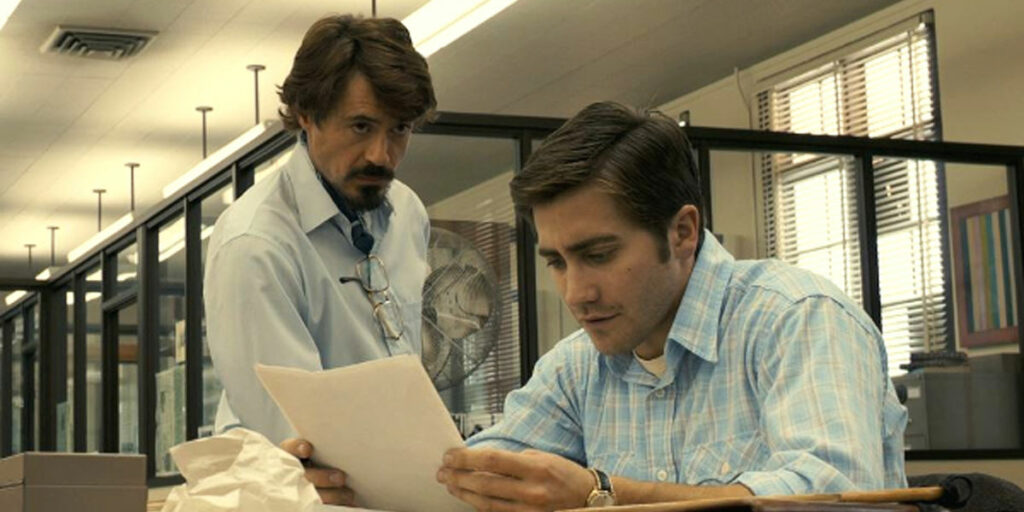
Zodiac is David Fincher’s take on the investigative thriller, an astute character study that’s driven forward by the dark truth of the killer’s crimes.
Unlike many procedural thrillers of its time, David Fincher’s Zodiac unlocks the secret of the genre by never relying too heavily on the facts to make this true story work. It’s a dramatic retelling of the truth – and that certainly doesn’t mean it’s inaccurate, because it sticks closely to the confirmed facts of the case, but the movie soars by making its characters and relationships just as interesting as the objective story. It’s not just a chronicle of the Zodiac Killer’s crimes, but rather an intense investigation into the obsession and drive that characterize humanity’s innate need to solve puzzles. It does this by focusing closely on the detectives, journalists, and even regular citizens who fought against the Zodiac and dedicated their time to bringing him down.
David Fincher developed a strong name for himself over the years as a master of the thriller genre, filling his movies with complex narratives and gripping sequences that keep the audience invested from start to finish. Zodiac is no different, as Fincher uses his directorial talent to reconstruct the killer’s crimes with immense detail and flair, forcing the audience to come face-to-face with the specific horrors of this infamous case. Despite spending plenty of time away from the crimes and focusing on the investigation, Zodiac manages to uphold this dark intensity throughout its lengthy runtime.
There are admittedly some moments (specifically in the second act) when Zodiac ’s pacing and momentum begin to fumble, but Fincher always knows how to rectify these cracks in the script by forging even more exciting set pieces and offering the audience small clues to regain their attention and intrigue. But even when Zodiac falters in these moments, the film’s talented ensemble is always captivating enough to keep things moving. Jake Gyllenhaal is undeniably the standout as cartoonist Robert Graysmith, whose obsession with puzzles and riddles keeps drawing him back to the Zodiac Killer’s elusive clues. He perfectly captures Graysmith’s inner conflict, as his growing interest in the case forces him to question just how much he’s willing to lose in pursuit of the truth.

Both Robert Downey Jr. and Mark Ruffalo give impressive performances as journalist Paul Avery and detective Dave Toschi respectively. Fincher has always been a director who knows how to draw powerful performances from his actors, and Zodiac ’s ensemble is among the director’s most consistent to date. More than just a story of crime and punishment, Zodiac is a cautionary tale of what happens when people get too involved and obsessed with the seductively dark corners of the world. Each character experiences and suffers from this compulsion in various different ways, and that gives each individual a very distinct and important purpose within the story.
It’s impossible to discuss a David Fincher project without commenting on the visual and technical prowess – but these are areas where Zodiac doesn’t get nearly enough credit. Not only are the cinematography and lighting just as alluring and noteworthy as you’d expect from a Fincher movie, but the camera movements and precise framing are also excellent. He really makes the most of every single scene, ensuring to place the camera in the most interesting and engaging positions for each moment. It’s this level of craft that elevates Zodiac high above its competition, proving that even the most objective and fact-based narratives can be made thrilling by a little creativity.
Though it’s hardly ignored by most audiences, Zodiac remains the most underappreciated project of David Fincher’s career. While the director is most notable for works such as Se7en or Fight Club , there’s a level of consistency and authenticity to Zodiac that most fans often forget to appreciate. It’s admittedly easy to overlook the project—parts of the script feel pretty uneven, and the fact-based narrative definitely isn’t as original as Fincher’s other works—but it’s a technical feat that’s filled with outstanding performances and beautiful shots from start to finish. Zodiac is the dark horse of David Fincher’s filmography, a near-masterpiece hiding in the shadows of several flashier, more stylish stories.
Zodiac is now available to watch on digital and on demand. Watch Zodiac !
- TAGS: David Fincher
- Film Festivals , Films , TIFF
Aberdeen (2024) Film Review: Bold but Flawed
- Louis Roberts
- September 8, 2024
- Film Festivals , Films , Must Watch , TIFF
The Last Showgirl Review: A Woman Out of Time
We live in time film review: charm in abundance, seven days film review: uneven but empowering.
- William Stottor
- September 7, 2024
Bonjour Tristesse Film Review: Flat Retelling
Nutcrackers film review: heart over head, latest posts.
Zodiac (United States, 2007)
Zodiac is a police procedural - a sort of souped-up, ultra-long episode of Law & Order . Based on the 1986 "true crime" book by Robert Graysmith, the movie looks back on one of the nation's most sinister unsolved crimes: the Northern California serial killings by the so-called "Zodiac killer." Although no arrest was ever made and the case now resides on the SFPD's inactive list, many journalists, cops, and investigators had their own "favorite" candidates for the identity of Zodiac. The movie follows the hunt by cartoonist-turned-writer Graysmith (Jake Gyllenhaal) as he seeks to unmask the villain.
To its credit, Zodiac is faithful to its source material. However, from a stylish director like David Fincher, the straightforward, no-frills approach is a little bit of a letdown. The digital photography is sharp, but there's nothing remarkable about it. There's no sense of the cinematic flair that has marked Fincher's previous efforts (even Alien 3 , for all of its faults, was visually dynamic). One can count on one hand the number of flourishes apparent during the nearly three-hour running time.
During its first hour, Zodiac unfolds along three parallel trajectories. The killer systematically eliminates victims (the crimes are re-enacted based on the survivor testimony contained in Graysmith's book). The police, led by detectives Dave Toschi (Mark Ruffalo) and Bill Armstrong (Anthony Edwards) investigate and collect clues. And newspaper people like Paul Avery (Robert Downey Jr.) and Graysmith fill the papers with speculation and fact. Then, a little more than a third of the way through the book, the Zodiac killer's spree stops and the movie chronicles Graysmith's obsessive hunt to uncover his identity. He conducts interviews, pours over old files, and eventually comes up with the perfect suspect: Arthur Leigh Allen (John Carroll Lynch), who is damned by circumstantial evidence.
Zodiac does not promise an impartial perspective of the search for the killer. Since it's based on Graysmith's book, it represents the author's viewpoint and the facts are slanted in favor of his preferred suspect. Whether Allen was the Zodiac killer or not is something we'll never know (he died more than a decade ago), but the film stacks the deck in his favor to avoid being completely open ended. Certainly, few who see this film will leave the theater frustrated by the real-world fact that the case remains unsolved.
That Zodiac draws conclusions isn't its problem (to the degree that it has a problem) - the structure is. While the killer is active and the police investigation is in full throttle, there's tension and momentum. It's a cat-and-mouse game. But when the focus shifts to Graysmith, the film shifts into neutral. While there's a certain amount of fascination associated with following an investigator tracking down disintegrating leads and digging through mounds of old records, it's not cinematic, and this at times makes the second half of Zodiac sluggish. Fincher's attempts to create tension (anonymous phone calls with heavy breathing, a creepy film buff who might be dangerous) inject suspense, but the intensity level is low. As thrillers go, most of Zodiac is more of a slow burn than an explosion - not necessarily a bad thing, but it requires patience. The running length is problematic. Fincher is so determined to meticulously recreate Graysmith's investigation that he risks losing his audience. There are numerous dramatically effective sequences during the second half, but the uneven pace results in stagnant periods.
So where is Fincher in all of this? Zodiac has a generic look and feel that is at variance with what we have come to expect from the director. Even Fincher's early music videos had more style than this. That's not to say that the film's direction is inept. Technically, it's fine and there are some nice helicopter shots (and a nifty time lapse sequence of a building being constructed), but there's nothing special about it. It's as if Fincher is saying, "Look! I can do regular stuff too!" There was more menace and atmosphere in Spike Lee's Summer of Sam , another film about a real-life serial killer.
The performances, like Fincher's direction, are competent. Jake Gyllenhaal is understated as usual, but that's appropriate for his low-key character. As Graysmith's obsession grows, Gyllenhaal comes alive. Mark Ruffalo is very good at being petulant but has trouble with sincerity. Robert Downey Jr. once again plays the flamboyant rogue with alcohol/substance abuse problems. Art imitating life, I suppose, but he can do this kind of role in his sleep. Arguably, the best performance belongs to John Carroll Lynch who captures Allen's creepiness without doing anything overt. Brian Cox steals a few scenes as Melvin Belli (he even gets to make a Star Trek reference).
Although the entirety of the movie spans 22 years, from 1969 until 1991, the majority of the scenes transpire in 1969 and the early '70s, and the film is at its most effective during those years. Zodiac becomes fragmented when it starts lurching ahead to highlight the "big moments" in Graysmith's investigation. It's difficult to be too harsh on Zodiac because the subject is interesting (such is often the case with serial killers) and it is fascinating to observe as the investigatory pieces fall into place. Ultimately, however, the length and uneven pacing are stumbling blocks with which an audience must contend. Patient viewers will be rewarded; others may wish for something with less subtlety and more verve.
Comments Add Comment
- Fight Club (1999)
- In the Company of Men (1997)
- Apollo 13 (1995)
- Cosmopolis (2012)
- Cruel Intentions (1999)
- Bad Lieutenant (1993)
- Proof (2005)
- Jarhead (2005)
- Brothers (2009)
- Moonlight Mile (2002)
- Demolition (2016)
- Rendition (2007)
- Eternal Sunshine of the Spotless Mind (2004)
- Kids Are All Right, The (2010)
- Avengers, The (2012)
- Just Like Heaven (2005)
- Rumor Has It... (2005)
- All the King's Men (2006)
- Short Cuts (1993)
- Iron Man (2008)
- Good Night, and Good Luck (2005)
- Natural Born Killers (1994)
- Chaplin (1993)
- Due Date (2010)
The Movie Review: 'Zodiac'
A former music-video auteur, Fincher largely made his name in 1995 with the grand guignol murder fantasy Se7en , arguably the most influential genre film of the last 15 years directed by someone not named Tarantino. But where Se7en , with its stygian gloom and theatrical executions, inflated the serial killer genre to gothic proportions, Zodiac lets the air back out. It is methodical rather than macabre, clinical rather than cruel. Consciously modeled on All the President's Men , it shares that film's knack for almost ostentatious understatement.
Early in the movie there are two gruesome, would-be double murders. (In each case, one of the intended victims remarkably survives.) But rather than up the ante in typical fashion, with an escalating series of violent assaults, Zodiac quickly sprawls outward, following the ripples created by the initial bloodshed. The killer begins writing letters to the San Francisco Chronicle , full of coded clues and threats. The paper's flamboyant, dissolute crime reporter, Paul Avery (Robert Downey Jr.), begins covering the case, as does, more oddly, a timid editorial cartoonist named Robert Graysmith (Jake Gyllenhaal). When the unknown killer, who dubs himself "Zodiac," murders a cabbie in San Francisco, another pair of investigators is added to the mix in police officers Dave Toschi (Mark Ruffalo) and William Armstrong (Anthony Edwards).
As the weeks and years pass, clues are uncovered, misplaced, debunked. Threats of further violence--including, famously, a promise to murder a schoolbus full of children--are mailed to the Chronicle . Suspects multiply, even as the men investigating them begin to dwindle. Avery slips into alcoholism and drug abuse; Armstrong transfers to another job in the department. Even supercop Toschi (the real-life model for Steve McQueen's "Bullitt") gradually moves on to other cases, other priorities. As everyone else's interest fades, though, Graysmith, the cartoonist, becomes ever more obsessed with the case, gradually reigniting the embers of the cold investigation.
Throughout, there are subtle nods to the changes taking place in American culture in the late '60s and '70s, and to the Zodiac killer's modest role in hastening them. The earliest scenes from the film, of teens cruising the innocent streets of California, could be outtakes from America Graffiti . Later, we find cop Toschi at a special screening of Dirty Harry , a film loosely based on the hunt for the Zodiac killer (in it, the psycho, "Scorpio," really does abduct the schoolkids) and a harbinger of the nation's shifting mood on crime. Irritated by the movie's implicit rebuke of his work, Toschi leaves the theater early. "No need for due process, right?" he grumbles afterward.
The cast--which also features Chloë Sevigny, Brian Cox, and John Carroll Lynch--is uniformly excellent, but the real star of Zodiac is Fincher, whose craftsmanship shows in every frame. Visually, the film is a pleasure: Shot entirely with a digital camera, it has a slight golden hue that reinforces the theme of an America just beginning to lose its innocence. The design and costumes are spot on, conjuring that most implausible of eras in a manner simultaneously precise and dreamlike.
But it's in the movie's pacing that Fincher's touch shows most clearly. This is a film in which, frequently, not very much is happening: Reporters and investigators try to crack a code or interview suspects or discuss elements of the crimes. There are no gunfights or car chases. Yet talky though the film is (and long, clocking in at over two and a half hours), it has an almost breathless momentum. Though the dialogue itself is not particularly memorable, the entire cast crackles in conversation; they have their patter down. One early scene, in which policeman Armstrong tries to negotiate some thorny jurisdictional conflicts with officers at two other departments, is a particular pleasure, transmuting one of the dullest subjects ever committed to celluloid into gold. Whatever advice or direction Fincher may have offered his performers on their line readings--his verbal choreography, for want of a better term--paid off handsomely.
Indeed, it's difficult to think of a more perfect pairing of director and project than Zodiac , which attaches Fincher's legendarily painstaking methods to a story about procedure and obsession. It's not merely the director's tendency to shoot and re-shoot a given scene dozens of times. ("The first day of production in San Francisco we shot 56 takes of Mark and Jake," Fincher explained to Entertainment Weekly , "and it's the 56th take that's in the movie.") Along with screenwriter James Vanderbilt, Fincher also spent months interviewing witnesses and investigators and hiring forensic experts to examine the Zodiac evidence anew. Just as Graysmith, the killer's most tireless pursuer (on whose books the screenplay was based), had done some 30 years earlier, the filmmakers essentially reinvestigated the case from the ground up. It is perhaps thanks to this doggedness that Zodiac captures so persuasively that feeling, familiar to anyone who's worked long enough in journalism (or, I imagine, law enforcement), that the truth might be just around the corner, that one more scrap of evidence, one more phone call, could make all the pieces of the puzzle fit together at last. Like Graysmith, Fincher has madness in his method; unlike him, he has found what he was looking for.
This post originally appeared at TNR.com.
About the Author

More Stories
Why British Police Shows Are Better
The Secret of Scooby-Doo ’s Enduring Appeal
The True Story Behind David Fincher’s 'Zodiac' Is More Disturbing Than the Movie

Your changes have been saved
Email is sent
Email has already been sent
Please verify your email address.
You’ve reached your account maximum for followed topics.
The Big Picture
- David Fincher's film Zodiac is a retelling of the story of the infamous Zodiac killer, who remains unidentified to this day.
- The Zodiac killer murdered multiple people in the late 1960s and early 1970s, and sent letters to publications like the San Francisco Chronicle .
- The case remains unsolved, with Arthur Leigh Allen being a suspect but never conclusively linked to the crimes.
David Fincher is a master of his craft at the height of his career, boasting several Oscar-nominated modern classics such as Seven , The Social Network , and Fight Club . The 2007 movie Zodiac starring Robert Downey Jr. , Jake Gyllenhaal , and Mark Ruffalo not only joins this lineup of impressive Fincher films, but is also inspired by one of American history's most infamous serial murderers.
Written by James Vanderbilt and based on the books Zodiac and Zodiac Unmasked by Robert Graysmith , who worked as a cartoonist at the San Francisco Chronicle during the murders, the movie follows Jake Gyllenhaal's Graysmith, whose obsession with the Zodiac becomes the focus of its tagline : "There's more than one way to lose your life to a killer." But how much of Graysmith's book and Fincher's movie is true?
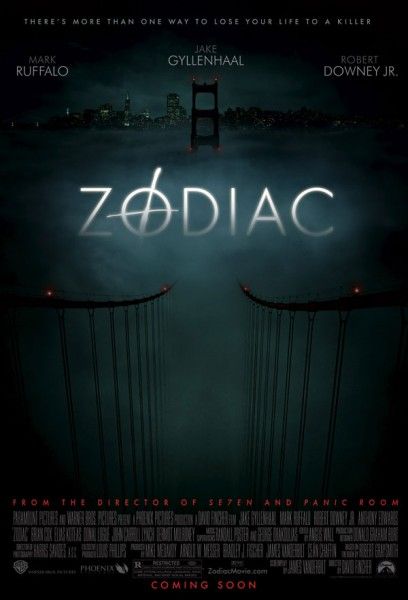
Between 1968 and 1983, a San Francisco cartoonist becomes an amateur detective obsessed with tracking down the Zodiac Killer, an unidentified individual who terrorizes Northern California with a killing spree.
The Zodiac Killer Murdered Five People Before the Movie's Opening Scene
The real Zodiac story begins with two Lompoc High School seniors, fiancées Robert Domingos and Linda Edwards . While sunbathing on a beach near Gaviota State Park during their "Senior Ditch Day" in June 1963, the two were bound with rope and were shot eleven and nine times respectively. Their bodies were dragged to a nearby shack where Robert's father found them soon after. Similarly, in October 1966, Cheri Bates left her father a note to say she'd gone to the Riverside City College Library only for her Volkswagen Beetle to be found abandoned there the next day, and her stabbed corpse left between two nearby houses. The local paper received a typed confession from the supposed killer one month later, and the following year, the newspaper, police, and Bates' father all received similar handwritten letters signed "Z." These events wouldn't be linked to the Zodiac killer until years later.
The story continues with more high schoolers, Betty Lou Jensen and David Faraday , whose first date took place in December 1968. According to passing motorists, they were parked at a lovers' lane in Benicia before Jensen was found shot in her back in the front seat and Faraday shot in the head outside the vehicle. In Vallejo the following year, married mother Darlene Ferrin parked in another lovers' lane with Michael Mageau . They were approached by a stranger who shot them both. Ferrin died of her injuries but Mageau survived. The killer called the Vallejo Police that night to confess, stating, "I also killed those kids last year. Goodbye." The killing of Darlene Ferrin is where David Fincher's Zodiac begins its story.
Did the Zodiac Killer Really Write to the Newspaper?
On July 31, 1969, three letters were posted to the Vallejo Times-Herald , The San Francisco Chronicle , and The San Francisco Examiner respectively. These were mostly identical, detailing the weapons and ammunition used in the murders. They stated, "I like killing because it's so much fun," and threatened to kill again if the publications refused to publish his attached cipher. Another letter was sent to the Examiner five days later teasing the police for failing to solve the cipher. "When they do crack it, they will have me." This letter features the first use of the name "the Zodiac." San Francisco Chronicle published their cipher, but it didn't stop the killing. The following September, college students Bryan Hartnell and Cecelia Shepard were both stabbed by a man wearing a hooded costume and the Zodiac symbol. Shepard died of her wounds but Hartnell survived.
One month later, 28-year-old cab driver Paul Stine was shot in the head and had a piece of his shirt removed. SFPD's Dave Toschi investigated the scene and would soon become the inspector most famously related to the case. Toschi's fame and style would go on to inspire movies such as Dirty Harry and Bullitt . Toschi considered Stine's death part of a routine robbery until the killer sent a letter to The San Francisco Chronicle that included the missing piece of Stine's bloodstained shirt to prove his legitimacy. In the movie, the Chronicle's Paul Avery reads the letter, bringing Toschi (Ruffalo), Avery (Downey Jr.), and cartoonist-turned-Zodiac-obsessive Robert Graysmith (Gyllenhaal) together at last.
Zodiac and Paul Avery Became Unlikely Pen-Pals in Real-Life
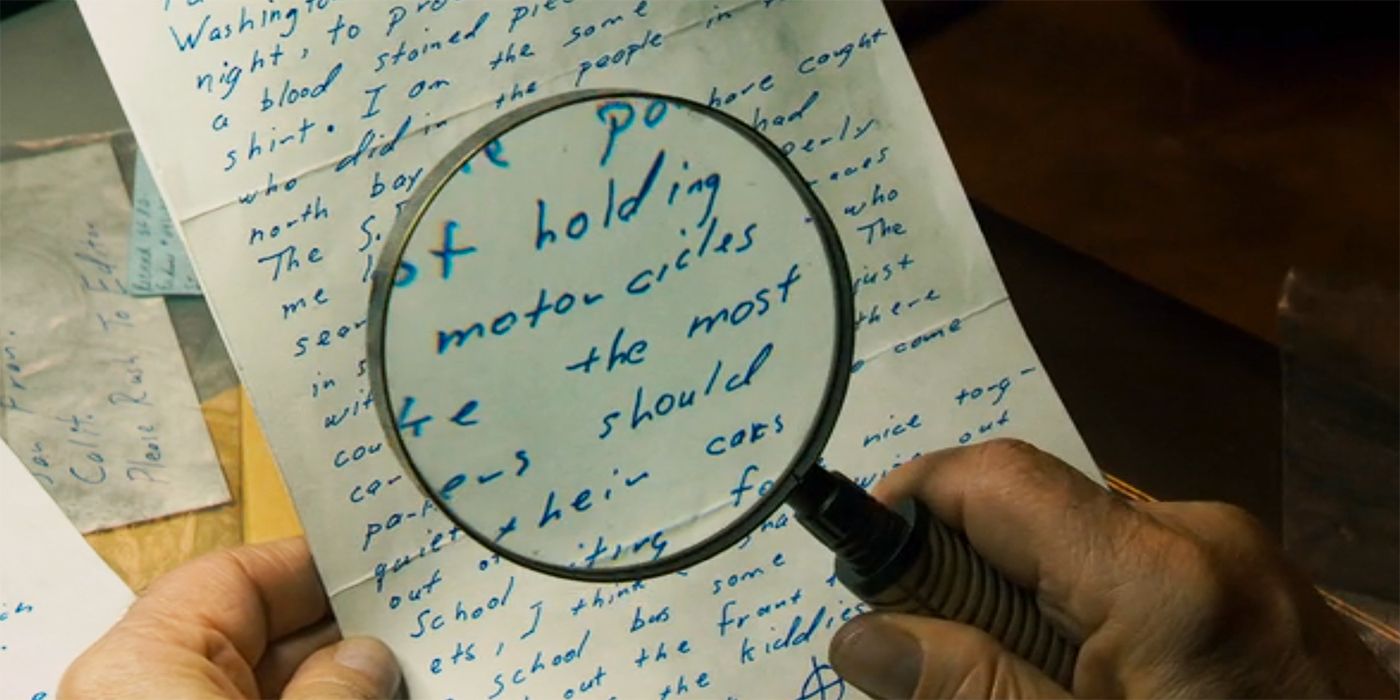
The Chronicle soon became the Zodiac's primary correspondence for publication, sending them two more letters that year . The letters included ciphers and accounts of the police nearly catching him but ignorantly letting him go. They would go on to receive several more letters from the Zodiac throughout 1970, some denying involvement in recent crimes, others claiming responsibility. Enjoying the fame Avery's articles provided him, the Zodiac demanded in April 1970 that the people of San Francisco's Bay Area wear "Zodiac buttons" featuring his symbol. In July 1970, he complained about the lack of "Zodiac buttons" being worn. The Chronicle decided against publishing a few Zodiac letters at this time, with Avery controlling the narrative himself. As a result, the killer likely became frustrated and began targeting Avery personally .

'Fight Club's Not-So-Secret, Secret Obsession With Starbucks
How do you think Tyler Durden likes his coffee?
One year after receiving Paul Stine's bloody clothing in the mail , Avery received a Halloween card that read, "From your secret pal," "Peek-a-boo - you are doomed," and the number "4-teen" implying either the Zodiac had claimed an unidentified fourteenth victim, or that it could be Avery himself. Unlike the movie suggests, there was no bloody cloth in this envelope as Paul Stine's clothing was received the year prior. However, as the movie suggests, this new targeted correspondence directed at Avery specifically (or "Averly" as Zodiac frequently misspelled it) meant that Avery carried a .38-caliber revolver with him at all times after that. The film also correctly notes that Chronicle employees including Avery himself would later wear "I Am Not Avery" buttons as a joke to avoid becoming the Zodiac's next victim.
The Zodiac Case Remains Unsolved
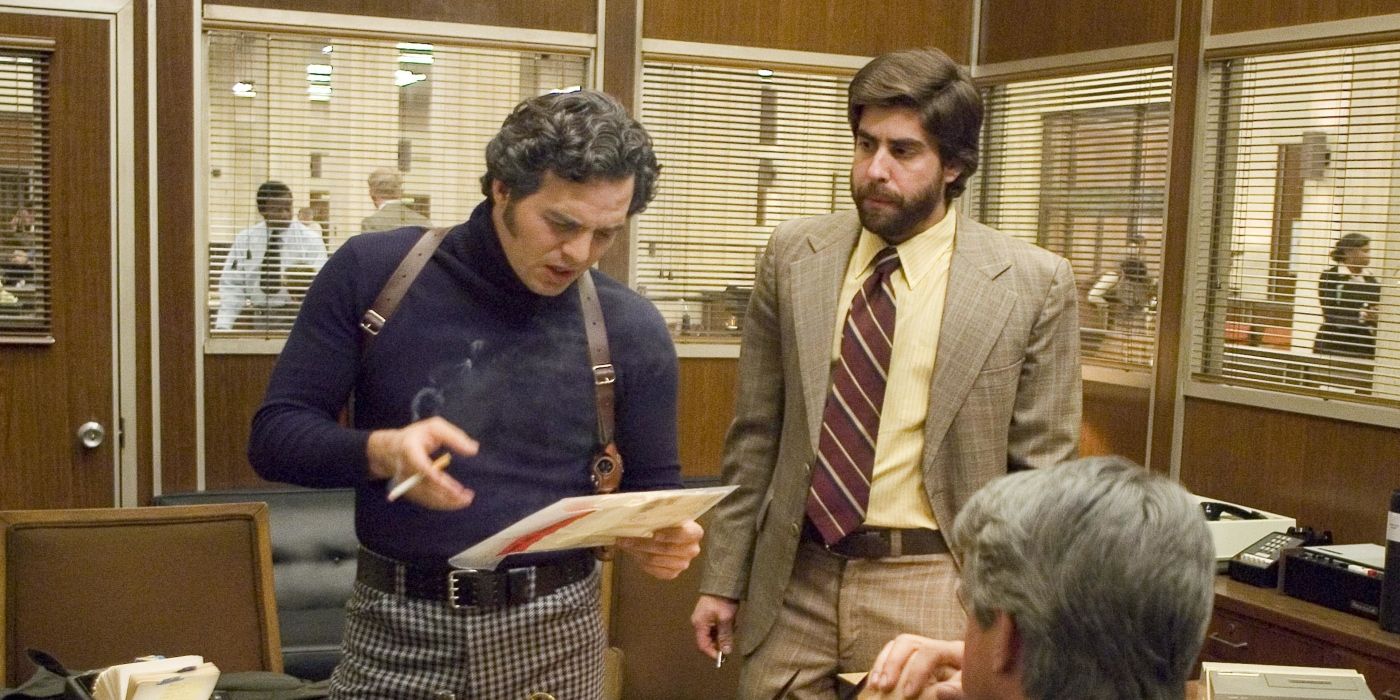
The Zodiac killings seemed to stop in the following years. This was seemingly contradicted by a letter to the Albany Times Union in August 1973 that stated where and when he would kill again. The police failed to identify any murders from that date to relate to the Zodiac, and handwriting experts were unable to verify whether it was even written by the same person. Another letter to the Chronicle in 1974 stated, "Me – 37, SFPD – 0" implying the killer had claimed 37 victims by then and was still at large.
Ultimately, the Zodiac's identity remained a mystery, with Toschi convinced it was Arthur Leigh Allen , a teacher and child molester who had served three years in a mental hospital. Unfortunately for Toschi though, Allen’s fingerprints and handwriting didn’t match the killer’s, and he passed a polygraph test that Allen said went on for 10 hours . Police quietly reopened the case in 1991. 1969's Zodiac survivor Michael Mageau identified Allen from a mugshot in 1991, but the Vallejo police department deemed this to be invalid since, by his own admission, Mageau never got a good look at the gunman at the time. Allen died in 1992. Robert Graysmith would go on to write the book that Fincher's movie was based on, both of which attempt to provide some closure by surmising that Allen was the Zodiac but that he died before the police could question him again after Mageau's supposedly valid statement.
Zodiac is available to watch on Paramount+ in the U.S.
Watch on Paramount+
- Movie Features
- David Fincher
Common Sense Media
Movie & TV reviews for parents
- For Parents
- For Educators
- Our Work and Impact
Or browse by category:
- Movie Reviews
- Best Movie Lists
- Best Movies on Netflix, Disney+, and More
Common Sense Selections for Movies

50 Modern Movies All Kids Should Watch Before They're 12

- Best TV Lists
- Best TV Shows on Netflix, Disney+, and More
- Common Sense Selections for TV
- Video Reviews of TV Shows

Best Kids' Shows on Disney+

Best Kids' TV Shows on Netflix
- Book Reviews
- Best Book Lists
- Common Sense Selections for Books

8 Tips for Getting Kids Hooked on Books

50 Books All Kids Should Read Before They're 12
- Game Reviews
- Best Game Lists
Common Sense Selections for Games
- Video Reviews of Games

Nintendo Switch Games for Family Fun

- Podcast Reviews
- Best Podcast Lists

Common Sense Selections for Podcasts

Parents' Guide to Podcasts

- App Reviews
- Best App Lists

Social Networking for Teens

Gun-Free Action Game Apps

Reviews for AI Apps and Tools
- YouTube Channel Reviews
- YouTube Kids Channels by Topic

Parents' Ultimate Guide to YouTube Kids

YouTube Kids Channels for Gamers
- Preschoolers (2-4)
- Little Kids (5-7)
- Big Kids (8-9)
- Pre-Teens (10-12)
- Teens (13+)
- Screen Time
- Social Media
- Online Safety
- Identity and Community

How to Help Kids Build Character Strengths with Quality Media
- Family Tech Planners
- Digital Skills
- All Articles
- Latino Culture
- Black Voices
- Asian Stories
- Native Narratives
- LGBTQ+ Pride
- Best of Diverse Representation List

Multicultural Books

YouTube Channels with Diverse Representations

Podcasts with Diverse Characters and Stories

- Common Sense Says
- Parents Say 21 Reviews
- Kids Say 30 Reviews
Common Sense Media Review
By Cynthia Fuchs , based on child development research. How do we rate?
Notorious case inspires dark, sinuous thriller.
Parents Need to Know
Parents need to know that this three-hour movie about the investigation into a string of real-life serial murders during the early 1970s is too violent and disturbing for most teens (and probably even some adults). While some violence takes place off screen, what does appear is brutal and bloody: The Zodiac shoots a…
Why Age 18+?
Drinking to drunkenness in bars (Paul and Robert favor blue drinks called "
Repeated profanity, especially "f--k," as well as "s--t," &q
Extremely bloody crime scenes; violence includes shooting, stabbing (especially
Some references by name (Folgers, the movie Bullitt), plus background imagery (C
Suggestion of sexual desire as first victims "park" (they're shot
Any Positive Content?
Serial killer is cruel and plainly deranged; cops and reporters argue amongst th
Drinking, Drugs & Smoking
Drinking to drunkenness in bars (Paul and Robert favor blue drinks called "Aqua Velvas"); more drinking at Belli's Christmas party (he offers a "toddy"); frequent cigarette smoking; Paul looks high/wasted at work -- he snorts cocaine and keeps a full bar and other drugs in his home.
Did you know you can flag iffy content? Adjust limits for Drinking, Drugs & Smoking in your kid's entertainment guide.
Repeated profanity, especially "f--k," as well as "s--t," "hell," "goddamn it," and other colorful language ("Sweet mother of Christ," "Jesus on crutches," "Tell him to screw," "crap," "getting your rocks off with a girl") and name-calling ("shorty" and "retard").
Did you know you can flag iffy content? Adjust limits for Language in your kid's entertainment guide.
Violence & Scariness
Extremely bloody crime scenes; violence includes shooting, stabbing (especially brutal), fighting; much discussion of means of murder, ammunition, and gun types; letters from killer describe plans to kill children on school buses (a boy hears this on TV and looks worried); mention of gas chamber; woman in prison appears with dark bruises on her arm; scary scene in basement when Robert thinks he's met the killer by accident (jump shot, dark shadows, tense music); discussion of a suspect's deviant history ("touching kids").
Did you know you can flag iffy content? Adjust limits for Violence & Scariness in your kid's entertainment guide.
Products & Purchases
Some references by name (Folgers, the movie Bullitt ), plus background imagery (Coca-Cola and Campbell's soup in vending machines, Slinky on TV); Dirty Harry on movie screen.
Sex, Romance & Nudity
Suggestion of sexual desire as first victims "park" (they're shot before they even kiss); Paul reports that the killer is a "latent homosexual."
Did you know you can flag iffy content? Adjust limits for Sex, Romance & Nudity in your kid's entertainment guide.
Positive Messages
Serial killer is cruel and plainly deranged; cops and reporters argue amongst themselves and become obsessed with the case to the point of ruining their home lives. Paul gives his editor the finger.
Parents need to know that this three-hour movie about the investigation into a string of real-life serial murders during the early 1970s is too violent and disturbing for most teens (and probably even some adults). While some violence takes place off screen, what does appear is brutal and bloody: The Zodiac shoots a couple in their car, stabs another couple in the back (the victims' pained, horrified faces are shown both times), and shoots a cabbie. Police officers and reporters discuss the deaths in some detail. Characters drink heavily and smoke frequently (one also uses hard drugs). References are made to the killer's "latent homosexuality" and a suspect's pedophilia. Language includes repeated uses of "f--k." To stay in the loop on more movies like this, you can sign up for weekly Family Movie Night emails .
Where to Watch
Videos and photos.

Parent and Kid Reviews
- Parents say (21)
- Kids say (30)
Based on 21 parent reviews
well made thriller with some confusing moments
What's the Story?
An intelligent, sinuous mystery, ZODIAC is less interested in sensational violence than in the ways that the media affects such violence. Based on the notorious, still-unsolved early-1970s Zodiac murders in the San Francisco area, the movie focuses first on efforts to figure out the murderer's motives and then on the ways that the Zodiac "imagined" himself into public consciousness by writing letters to the San Francisco Chronicle and leaving clues to taunt the police. The film begins with a murder -- the first one for which the killer took public credit. After the shooting, Zodiac calls the police and sends a letter to the Chronicle , demonstrating -- in his mind, anyway -- that he's smarter than all of them. As he uses the media to "make himself up," the movie considers the effects of the case on those who pursue him, including Inspector David Toschi ( Mark Ruffalo ) and his partner, Inspector William Armstrong (Anthony Edwards); as well as earnest cartoonist Robert Graysmith ( Jake Gyllenhaal ) and brilliantly self-destructive crime reporter Paul Avery ( Robert Downey Jr. ). They run into problems at every turn, from law enforcement officials in different jurisdictions who don't want to work together to handwriting experts, fingerprinters, and even celebrity lawyer Melvin Belli ( Brian Cox ). With egos getting in the way, only rudimentary technologies to work with, and legal impediments, no one cracks the case, and everyone loses themselves to it.
Is It Any Good?
David Fincher 's excellent movie includes several violent murder scenes (a stabbing is especially grisly). But it's more interested in the consequences of the brutality: crime scenes, investigative procedures, fear in the community. In a mess of intersecting obsessions and deceptions, Zodiac finds remarkable coherence, tracing the similar needs, means, and fictions that structure truth.
Talk to Your Kids About ...
Families can talk about the media's relationship with serial killers. How do the killers use the media to gain attention? How do the media use the killers to gain ratings? How do viewers and readers respond to such coverage? Think about how movies portray killers and their pursuers: Unlike The Silence of the Lambs , this movie focuses on the investigation, with very little information about the killer. How does that affect the film's narrative and displays of violence? Is violence more effective when it's shown, or when it's implied? Why?
Movie Details
- In theaters : March 1, 2007
- On DVD or streaming : July 24, 2007
- Cast : Chloe Sevigny , Jake Gyllenhaal , Mark Ruffalo
- Director : David Fincher
- Inclusion Information : Female actors
- Studio : Warner Bros.
- Genre : Thriller
- Run time : 165 minutes
- MPAA rating : R
- MPAA explanation : some strong killings, language, drug material and brief sexual images.
- Last updated : September 7, 2024
Did we miss something on diversity?
Research shows a connection between kids' healthy self-esteem and positive portrayals in media. That's why we've added a new "Diverse Representations" section to our reviews that will be rolling out on an ongoing basis. You can help us help kids by suggesting a diversity update.
Suggest an Update
What to watch next.

The Silence of the Lambs

Common Sense Media's unbiased ratings are created by expert reviewers and aren't influenced by the product's creators or by any of our funders, affiliates, or partners.
Screen Rant
Zodiac: how the movie compares to the real life cases.

Your changes have been saved
Email is sent
Email has already been sent
Please verify your email address.
You’ve reached your account maximum for followed topics.
Kevin Costner Addresses Cancelled Horizon Chapter 2 Release Following Chapter 1's Poor Box Office
Matt damon’s $630 million sci-fi movie from 9 years ago now on streaming is the perfect interstellar follow-up, 10 spider-man movie quotes that aged poorly.
David Fincher's 2007 crime-thriller, Zodiac , creates a narrative out of the real-life crimes of the titular serial killer , who was active in Northern California in the late 60's and early 70's. While the notoriously unsolved Zodiac case consists of seven confirmed victims, the killer claims to have committed a total of 37 murders.
Based on true crime writer Robert Graysmith's novel of the same name, Fincher's Zodiac follows those tracking the unidentified murderer as he mocks their failure, soaks up media attention, and continues to kill. Graysmith, ( Jake Gyllenhaal ), was a cartoonist at the San Francisco Chronicle when the paper began to receive encrypted notes from the Zodiac killer. Obsessed with cracking Zodiac's code, Graysmith became increasingly engrossed in the case, eventually abandoning his career as a cartoonist to write a series of true crime novels. As is the case in Fincher's film, Graysmith's unflinching interest in the case eventually cost him his marriage to his second wife, Melanie (Chloë Sevigny). Also involved in the case are crime reporter Paul Avery ( Robert Downey Jr. ) and San Francisco police inspector Dave Toschi ( Mark Ruffalo ).
Related: Orphan True Story & Real Life Crime Explained
Zodiac's first three attacks took place in secluded areas where he targeted privacy-seeking couples. His first confirmed victims, teenagers David Faraday and Betty Lou Jensen, were on a date before Zodiac fatally shot both of them in their parked car. Months later, he confessed to the murders while calling the police to report his recent assault on another young couple, Darlene Ferrin, who died during the shooting and Mike Mageau, who was injured but lived. Zodiac's third set of victims, Bryan Hartnell and Cecilia Shepard, were picnicking by Lake Berryessa in Napa County where they were held at gunpoint and tied up. Zodiac stabbed the pair repeatedly and while Shepard succumbed to her words, Hartnell survived and was able to deliver his account of the attack. Zodiac's seventh confirmed victim was taxi driver, Paul Stine, who he shot in the head before fleeing the scene.
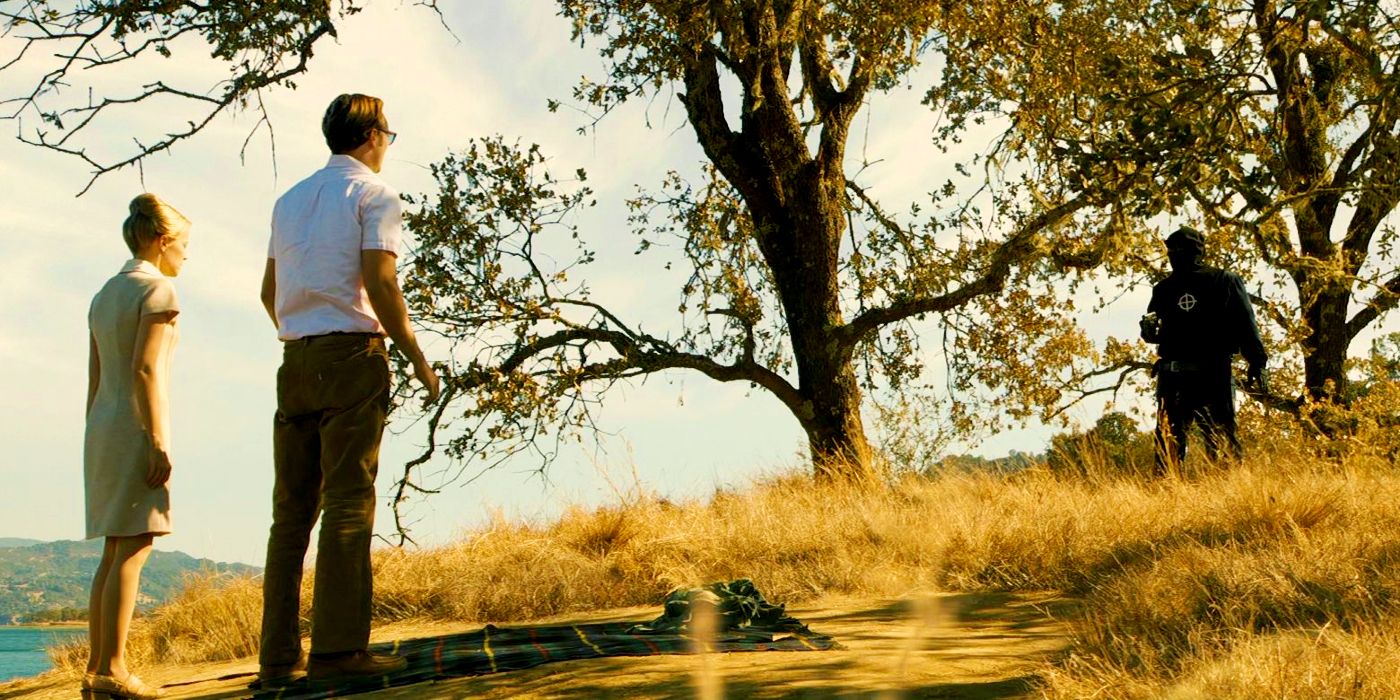
Fincher retained key details from the case, such as a piece of Paul Stine's shirt being mailed to the San Francisco Chronicle along with a letter in which Zodiac threatened to murder school children. Fincher, who grew up in the Bay Area, remembers this from his childhood, and was told of Zodiac's threats by his father after asking why his school bus was being followed by highway patrol. Also mentioned in the film are the husband and wife who were able to decipher a letter that included the quote " man is the most dangerous animal of all ", a very real reference Zodiac made to Richard Connell's 1924 short story , " The Most Dangerous Game ". Accurate details of the circumstantial evidence surrounding Graysmith and Toschi's favorite suspect, Arthur Leigh Allen, including his Zodiac watch and shoe size, were also included in Fincher's film.
Fincher portrays the crimes with great attention to detail, but chose to omit the Faraday and Jensen murder, instead only showing the attack on Ferrin and Mageau to highlight Zodiac's penchant for assaulting couples parked on "lovers lanes". In the film, accurate to the real-life correspondence between Zodiac and the media, it was after this shooting that newspapers, including the San Francisco Chronicle , received encrypted letters from the killer, included the symbol Bryan Hartnell described on his assailant's hood. The relationship between Chronicle cartoonist Robert Graysmith and crime reporter Paul Avery is exaggerated in Fincher's film , as the two did not meet until after they had both left the newspaper. The film focuses more on the confirmed victims and less on cases tentatively linked to the Zodiac, such as the 1963 shooting of Robert Domingos and Linda Edwards and the 1966 stabbing of college student Cheri Jo Bates, though we do see Fincher's Paul Avery assisting the Riverside Police Department, which handled Bates' case.
Fincher has said that attention to detail was a key goal of his while making the film and that himself, producer Bradley J. Fischer, and writer James Vanderbilt interviewed witnesses, family members of suspects, investigators, the two surviving victims, and the mayors of San Francisco and Vallejo. Going so far as to hire a forensic linguistics expert to further examine Zodiac's sentence structure and spelling, Fincher was determined to conduct an accurate re-telling of the crimes . After meeting Fincher and seeing the film, inspector Dave Toschi commended the filmmaker on his thorough research. The film's ending, much like the case, is left open-ended, a purposefully unsatisfying conclusion which Fincher felt was darkly fitting.
More: IT True Story: Real-Life Crimes That Inspired Pennywise
Notice: All forms on this website are temporarily down for maintenance. You will not be able to complete a form to request information or a resource. We apologize for any inconvenience and will reactivate the forms as soon as possible.
- DVD & Streaming
- Drama , Mystery/Suspense
Content Caution
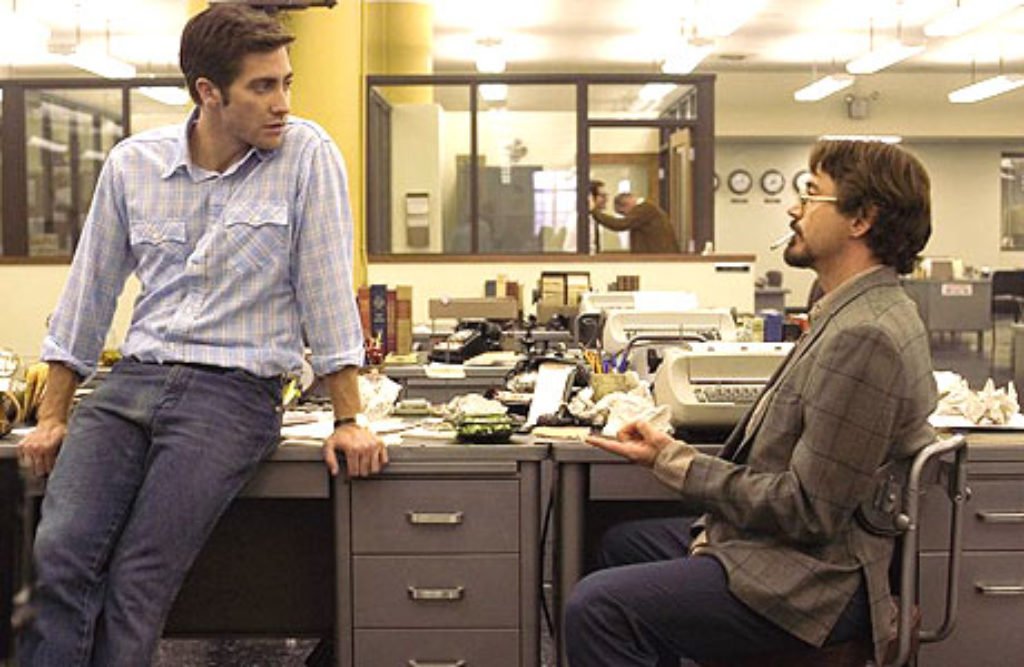
In Theaters
- Jake Gyllenhaal as Robert Graysmith; Mark Ruffalo as Dave Toschi; Robert Downey Jr. as Paul Avery; Anthony Edwards as Bill Armstrong; Brian Cox as Melvin Belli; Elias Koteas as Jack Mulanax; Chloë Sevigny as Melanie; Richmond Arquette, Bob Stephenson and John Lacy as The Zodiac Killer Suspects
Home Release Date
- David Fincher
Distributor
- Paramount Pictures
Positive Elements | Spiritual Elements | Sexual & Romantic Content | Violent Content | Crude or Profane Language | Drug & Alcohol Content | Other Noteworthy Elements | Conclusion
Movie Review
Counting two books and a battery of interviews among its source materials, Zodiac digs under the skin of the story of a real-life serial killer who terrified the public and perplexed law enforcement in the San Francisco Bay Area beginning in 1969. On Aug. 1 of that year, three local newspapers received letters claiming responsibility for several fatal shootings and another attempted murder. The letters contained details that would have been known only to the killer, along with a cipher—of which each paper was given only part—that the writer claimed would reveal his identity. More killings were promised if it was not published.
The “Zodiac,” as the killer would dub himself, seemed, in spirit, like London’s Jack the Ripper for his brazen, police-taunting mannerisms. A couple from Salinas, Calif., would crack the basic cipher, but the Zodiac’s identity remained elusive as the body count continued to rise: 13 of them, by the Zodiac’s claim. And letters continued to pile up, directing threats at even school children and providing fuel for the fire of the killer’s self-celebration.
Director David Fincher (Panic Room, Fight Club, Se7en) says that the crimes of the Zodiac, which still remain unsolved, have enthralled him for years, even as a young boy growing up in the Bay Area. That personal tie, perhaps, prompted him to create what he calls “the most informationally packed [movie] I’ve ever seen.”
This is not a Hannibal Lecter-style horror/thriller flick, then, that seeks to put you behind the eyes of a psycho killer and make you squirm as he does his dirty deeds—though it is brutally violent at times. What Fincher attempts here is not really an examination of the Zodiac, but rather four people absorbed in his case. Inspectors Dave Toschi and Bill Armstrong sift through endless suspects and dead-end leads in an investigation that reduces their personal lives to a faint memory. San Francisco Chronicle crime reporter Paul Avery fares no better for his high-risk, gun-wielding brand of “story research.” And at that same paper, editorial cartoonist Robert Graysmith channels his Eagle Scout-derived code-cracker enthusiasm into a full-fledged campaign for justice, risking his life and his relationship with his family along the way.
Positive Elements
Skilled detectives Toschi and Armstrong are dedicated to their pursuit of the Zodiac Killer. And the film’s lack of 24 – and CSI -style sensationalism elevates and illuminates their commitment to justice, due process and bringin’ down the bad guy. Twice Toschi throws out stray comments that denigrate the way movies ( Dirty Harry is referenced) don’t get it right in this regard. When Armstrong eventually quits the case (after years have gone by and the trail is ice cold), his decision is made in the interest of spending more time with his family.
Before totally giving himself over to his personal investigation, Graysmith shows signs of being a loving and involved parent. He accompanies a child to the bus stop and engages with his kids at meal time. At first he also attempts to shield his children from reports of the Zodiac. While driving his son, Graysmith changes the radio dial to tune out details about the killer. And when he and his son begin to watch a TV call-in program supposedly featuring the Zodiac, Graysmith turns it off when the talk becomes too grisly. At work, colleagues notice Graysmith’s generally upstanding character. It’s explained that he doesn’t smoke, drink or cuss.
Spiritual Elements
On the radio, callers discuss whether the Zodiac is a Satanist. One estimates that he certainly couldn’t have a Christian background. The killer’s nickname and use of ancient symbols suggest his fascination with astrology and/or the occult.
Sexual & Romantic Content
One suspect is said to have sodomized children, and, in his home, police uncover several hardcore porn magazines, the covers of which are shown briefly. There’s a reference to a naked fondue party, and a short scene features a cross-dresser. It’s said that in his articles Avery dubs the killer a “latent homosexual.” The Zodiac makes a crude sexual reference in one of his letters. When a young couple go parking on a date, the man asks the girl about her husband. The f-word is hurled as a sexual insult. Toschi is seen in his underwear.
Violent Content
Actress Chloë Sevigny sheds some light on the kind of violence found in Zodiac by sharing with teenhollywood.com how she felt about reading one of Robert Graysmith’s books. “Before I started the picture,” she said, “I thought, ‘Maybe I’ll read it and try to get into where my husband in the movie’s mind was, what he was obsessed with and what he was dealing with, day in and day out,’ and I couldn’t. I got almost through half of it and I had to put it down. I was like, ‘I just don’t want to read about this anymore.'” Indeed, the Zodiac killings depicted here, while taking up a very small portion of screen time, are unspeakably merciless.
When the Zodiac guns down a young couple parked at a lookout, the girl’s face and the car’s windows are shown splattered with blood. The Zodiac hogties another couple, threatens them with a handgun and feigns walking away. He returns to stab them repeatedly with a knife. The woman struggles and screams while the blade is shown piercing her back, stomach and chest.
A cab driver is shot point-blank as he sits in his car. Later we see cops examining the gunshot wound as his body hangs from an open car door. A frightening near miss involves a young mother and her infant. After sabotaging the woman’s car, the Zodiac Killer offers her a ride to the nearest service station. He announces coldly that he will throw the woman’s baby out the window before killing her. Passersby find her standing in the road, panicky, bloody and disheveled, having barely escaped.
Additionally, detectives and journalists spend quite a bit of time discussing the murders. And the Zodiac’s letters supply disturbing images, taunts and warnings. These include blood-stained shirt swatches from the murdered cabbie, descriptions of bombs and a threat to “pick off kiddies” getting off a school bus.
Crude or Profane Language
The f-word is used about 15 times, the s-word half that many times. Jesus’ name is abused nearly a dozen times; God’s is combined with “d–n” once.
Drug & Alcohol Content
Avery is a hard drinker, smoker and drug abuser. And his behavior is shown to be ruining his health, career and personal life. At one point, he and Graysmith (who is said elsewhere to be a non-drinker) down hard liquor late into the night in a smoky bar. Several other characters smoke, including Toschi and a mother of an infant.
Other Noteworthy Elements
To varying degrees, the journalists and police officers pursuing the Zodiac fail to guard themselves against becoming crippled by the weight of the unsolved murders. Graysmith, despite having the most altruistic motives of anyone involved, allows his investigation of the killings to become a full-blown obsession. He quits (loses) his job, pushes his wife and kids away, risks their safety, etc. And as his “interest” grows, his discernment wanes. Once protective of his kids’ emotional wellbeing, he ends up enlisting them as assistants as he desperately accumulates information about the Zodiac.
Much has been made of the exhaustive story research that went into creating Zodiac . In developing the project, David Fincher and others pored over thousands of pages of documents, interviewed surviving victims and retraced the killer’s steps alongside officers who worked the case. Says the director, “We backed everything up with documentation, our own interviews and evidence.”
Co-producer Bradley J. Fischer praises Fincher for also getting “to the psychology of what motivated the people who inhabited that world.” Fischer goes on to say, “It is a most human thing to want to know what can’t be known. It is a compulsion that exists in all of us.”
Zodiac clearly excels at comforting that compulsion. It was also crafted in an effort to document a historical era, and it can be easily said that this is a film that carries the potential of deepening our understanding of who we were and are as a society.
Time ‘s Richard Corliss, however, is compelling when he suggests the filmmakers had less admirable motives. “There’s no nice way to say it: movies love murderers,” he writes. “Producers may claim the killer’s story is a cautionary tale, but they revel—along with the villain and the audience—in the sick grandeur of a hit man, a supervillain, a serial killer. The psycho creeps toward his victim; we can’t watch, and we can’t turn away.”
When the Zodiac first demanded that his ciphers be printed, newspaper editors gave in. But as time passed, wiser heads prevailed and they decided to stop obliging him. The Zodiac also wanted a movie made about him, writing in one of his last known missives, “I am waiting for a good movie about me. Who will play me?” The answer to that question, unlike the question of the Zodiac’s own identity, is now a matter of record: Richmond Arquette, Bob Stephenson and John Lacy.
But it’s not the Zodiac’s demands and questions that should interest us; it’s how we respond to them—and whether we should continue to oblige them after all these years. As Entertainment Weekly put it, “It’s possible that he could be sitting next to you in the theater.”

Jeremy Lees
Steven isaac, latest reviews.

The Front Room

Beetlejuice Beetlejuice

Weekly Reviews Straight to your Inbox!

Want to stay Plugged In?
Our weekly newsletter will keep you in the loop on the biggest things happening in entertainment and technology. Sign up today, and we’ll send you a chapter from the new Plugged In book, Becoming a Screen-Savvy Family , that focuses on how to implement a “screentime reset” in your family!
Zodiac Ending Explained: Is Arthur Leigh Allen The Zodiac Killer?

It’s fitting that one of the most notorious mysteries in modern American history would be at the center of one of the greatest crime films ever made. The mystery of the Zodiac Killer – a serial murderer who terrorized the San Francisco Bay Area for years during the 1960s and 1970s – is a case that has inspired heaps of speculation, but no firm conclusions, and David Fincher ’s 2007 movie is a remarkable epic chronicling that time and the search for answers. Naturally, the feature adaptation of events doesn’t conclude by wrapping up the whole story with a bow, as it primarily sticks to events that happened in reality , but Zodiac ’s ending does make a pointed effort of shining a light on Arthur Leigh Allen, played by John Carroll Lynch, as a key suspect.
Because the story of the Zodiac Killer doesn’t have any kind of definitive ending in real life, the ending of David Fincher’s movie is fascinating in its own way – and invites the audience to dig deeper and develop their own explanations based on the evidence provided. Looking back at the remarkable entry in the legendary history of crime films, let’s dive deep into the ending of Zodiac and explore…
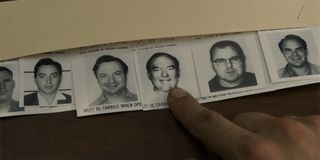
What Happens At The End Of Zodiac
The third act of Zodiac follows Robert Greysmith ( Jake Gyllenhaal ) as his personal investigation to uncover the identity of the Zodiac Killer takes over his life, and reaches a depressing climax when his wife Melanie (Chloë Sevigny) comes by their former home to drop off divorce papers. The place is a mess, as the rooms are filled with stacks of documents being examined as potential evidence, and Greysmith is stressed from repeated anonymous phone calls where all that comes from the other end of the line is heavy breathing.
Melanie laments the trajectory of their relationship, knocking over and picking up a stack of papers as she approaches her soon-to-be-ex-husband, and before she leaves she drops the divorce contract and the stray material on the floor in front of him. When Robert examines the pile, he discovers a photocopy of Arthur Leigh Allen’s driver’s license, revealing his birthday as December 18 – the same day that the Zodiac Killer called attorney Melvin Belli ( Brian Cox ) saying it was his birthday and that he needed to kill (per Belli’s housekeeper).
With this new evidence in hand, Robert goes out in the middle of the night during a massive downpour to visit Inspector David Toschi ( Mark Ruffalo ). Waking him up, the former cartoonist tells him about the phone call and the birthday, which is enough to get David invested. Together they head out to a local diner to discuss Robert’s evidence.
Convinced that Arthur Leigh Allen is the Zodiac Killer, Robert lays out his findings, including everything from the possible relationship that existed between Allen and the first ever victim, Darlene Ferrin (Ciara Moriarty), to how the timeline of events syncs up with notable episodes and movements in the suspect’s life over the last decade. By the end of the conversation, David seems mostly convinced by Robert’s conclusions, but acknowledges the bigger problem: there is no hard evidence linking Allen to the murders. With no hard evidence there is no solid case to be built, and without a solid case, charges can’t be brought up.
Approximately five years later, on December 20, 1983, Robert Greysmith visits a hardware store in Vallejo, CA. He enters and goes straight to a counter where he finds himself face-to-face with Arthur Leigh Allen. He’s working as an employee at the store, and a patch on his vest reads “Lee.” Allen asks if he can help with anything, and Robert says no. They size each other up silently before Robert turns to leave.
CINEMABLEND NEWSLETTER
Your Daily Blend of Entertainment News
Zodiac then jumps ahead another seven-and-a-half years to August 16, 1991 with a scene set at the Ontario International Airport. Robert Greysmith’s book about the Zodiac killer is on bookshelves labeled as a best-seller, and the long-absent Mike Mageau (Jimmi Simpson) agrees to an interview with Officer George Bawart (James Le Gros) of the Vallejo Police Department. Being the former boyfriend of Darlene Ferrin and a Zodiac Killer survivor, he is shown a lineup of photographs and asked if any of the men pictured attempted to kill him 22 years prior.
Told that he didn’t have to identify anyone, Mike Mageau points to the picture of Arthur Leigh Allen, saying “It’s him.” Asked to clarify how sure he is on a scale of one to 10, the survivor says, “At least an eight. Last time I saw this face was July 4, 1969. I’m very sure that’s the man who shot me.”
Before the end credits roll, text appears on screen noting that Arthur Leigh Allen died from a heart attack before he could take part in a meeting with the police following Mike Mageau’s identification. Furthermore, a partial DNA profile was run from a sample required from a Zodiac Killer envelope in 2002, and Allen could not be ruled out as a suspect. The San Francisco shut down their Zodiac Killer investigation in 2004, but as of the release of the film it remained an open case in Napa County, Solano County, and Vallejo. Robert Greysmith says he stopped receiving anonymous calls after Allen’s death.
So what does this all mean? Is Arthur Leigh Allen the Zodiac killer? Let’s dig in…
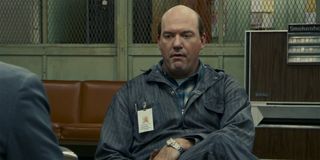
The Evidence Supporting Arthur Leigh Allen Being The Zodiac Killer
David Fincher’s Zodiac doesn’t make any kind of firm conclusions, allowing the audience to ingest the evidence showcased and make their own inferences. That being said, there is no figure in the story who has more fingers pointed at him than Arthur Leigh Allen. He may have never been charged as the Zodiac Killer, but all of the evidence dug up by Robert Greysmith certainly paints it as a realistic possibility, along with Mike Mageau’s witness testimony.
First there are the harmonious pieces of circumstantial evidence. As seen when Arthur Leigh Allen is interviewed by David Toschi, William Armstrong (Anthony Edwards) and Jack Mulanax (Elias Koteas), he not only wore a Zodiac watch – which seemed to be the inspiration for the killer’s name and symbol, but also military boots the same size as prints found at crime scenes, and also the same size gloves. Syncing up with the letters sent by the murderer, Allen also professed to being a big fan of the book The Most Dangerous Game by Richard Connell (referenced in the taunting notes), and was also known to misspell the word “Christmas” as “Christmass” (which the police learned from Allen’s own brother).
Arguably more significant than any of that, however, is the way in which Arthur Leigh Allen’s life seemed to frequently link up with the Zodiac Killer activities in the 1960s and 1970s. The first possible incident involving the murderer in Vallejo, California happened eight months after Allen was fired from his job because of child molestations. As for Darlene Ferrin, Allen lived in his mother’s basement less than 50 yards from Darlene’s place of employment, and it was confirmed that she had been seen with a strange guy named Lee.
Then there is the matter of Arthur Leigh Allen’s strange behavior after he was first interviewed by the police during the Zodiac Killer investigation. Two days after his meeting with Toschi, Armstrong, and Mulanax he moved to a different county, and letters stopped coming in for three years. As noted by Robert Greysmith, it was only after police moved away from Allen as a suspect that the letters began again – and then the letters noticeably stopped once more after Allen was arrested and sent to prison. Four years passed, but after Allen was released in 1977, the letters started again.
Altogether the evidence pointing at Arthur Leigh Allen seems solid – but there are some key holes in the case.
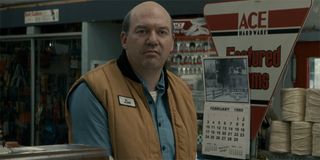
The Evidence Against Arthur Leigh Allen Being The Zodiac Killer
As pointed out by David Toschi in his diner chat with Robert Greysmith, the problem with building a case against Arthur Leigh Allen was that there were just enough issues to prevent a jury from convicting beyond a reasonable doubt. Circumstantial evidence doesn’t carry as much weight in a courtroom as physical evidence, and the police didn’t have anything of that nature that linked Allen to the murders. The search of his home after the initial interview turned up nothing, though it’s possible he disposed of evidence due to paranoia.
Also working against the theory were scientific findings. Prints found at the scene didn’t match Arthur Leigh Allen, and handwriting expert Sherwood Morrill (Philip Baker Hall) filed a report saying that the notes written by the Zodiac Killer didn’t match up with Allen’s penmanship. That being said, the filing notably didn’t factor in that Allen was ambidextrous, and his own protégé’s study of the same material didn’t disqualify him as the possible killer.
The legal system in America posits that every person is innocent until proven guilty, and in the case of Arthur Leigh Allen it was determined by the police that there simply wasn’t enough evidence to serve as the necessary proof. As Robert Greysmith says to David Toschi shortly before they part ways, though, “Just because you can’t prove it doesn’t mean it isn’t true.”

Where Things Stand With The Zodiac Killer In Real Life
Unlike David Fincher’s The Social Network, which is now begging for a sequel due to the impact that Facebook has had on society since 2010, Zodiac is a film not really needing a follow-up, as there haven’t been any real significant breakthroughs in the case since the movie was released back in 2007 .
The only recent development involving the hunt for the Zodiac Killer happened in May 2018 when it was announced by the Vallejo Police Department that there were going to be efforts to try and retrieve DNA from the back of the stamps that were on the letters that he sent. The results from the efforts have not yet been made public.
Given everything has been discussed here, and your own readings of David Fincher’s film, what are your conclusions about the ending of Zodiac ? Do you think that Arthur Leigh Allen was the notorious west coast serial killer? Could it have been one of the other suspects that the movie suggests, like Bob Vaughn? Answer our poll below, and hit the comments section with your thoughts, feelings, and opinions.
This poll is no longer available.
Eric Eisenberg is the Assistant Managing Editor at CinemaBlend. After graduating Boston University and earning a bachelor’s degree in journalism, he took a part-time job as a staff writer for CinemaBlend, and after six months was offered the opportunity to move to Los Angeles and take on a newly created West Coast Editor position. Over a decade later, he's continuing to advance his interests and expertise. In addition to conducting filmmaker interviews and contributing to the news and feature content of the site, Eric also oversees the Movie Reviews section, writes the the weekend box office report (published Sundays), and is the site's resident Stephen King expert. He has two King-related columns.
32 Funniest Lines By Melissa McCarthy
15 Black Celebrities Who Have Successful Businesses
Jessica Knight Left The NCIS Team In Season 21’s Finale, And The Showrunner Revealed That’s Created A ‘Chain Reaction’ In Season 22
Most Popular
- 2 As Work On The Batman: Part II Ramps Up, Barry Keoghan Is Humorously Trying His Best To Dodge Joker Questions
- 3 Turns Out Selena Gomez Is A Billionaire, And It's Not From Only Murders In The Building
- 4 The Best '90s Movies For 32 Actors
- 5 'Listen, You People:' Hannah Waddingham Gets Hilariously Real About Those Ted Lasso Season 4 Reports
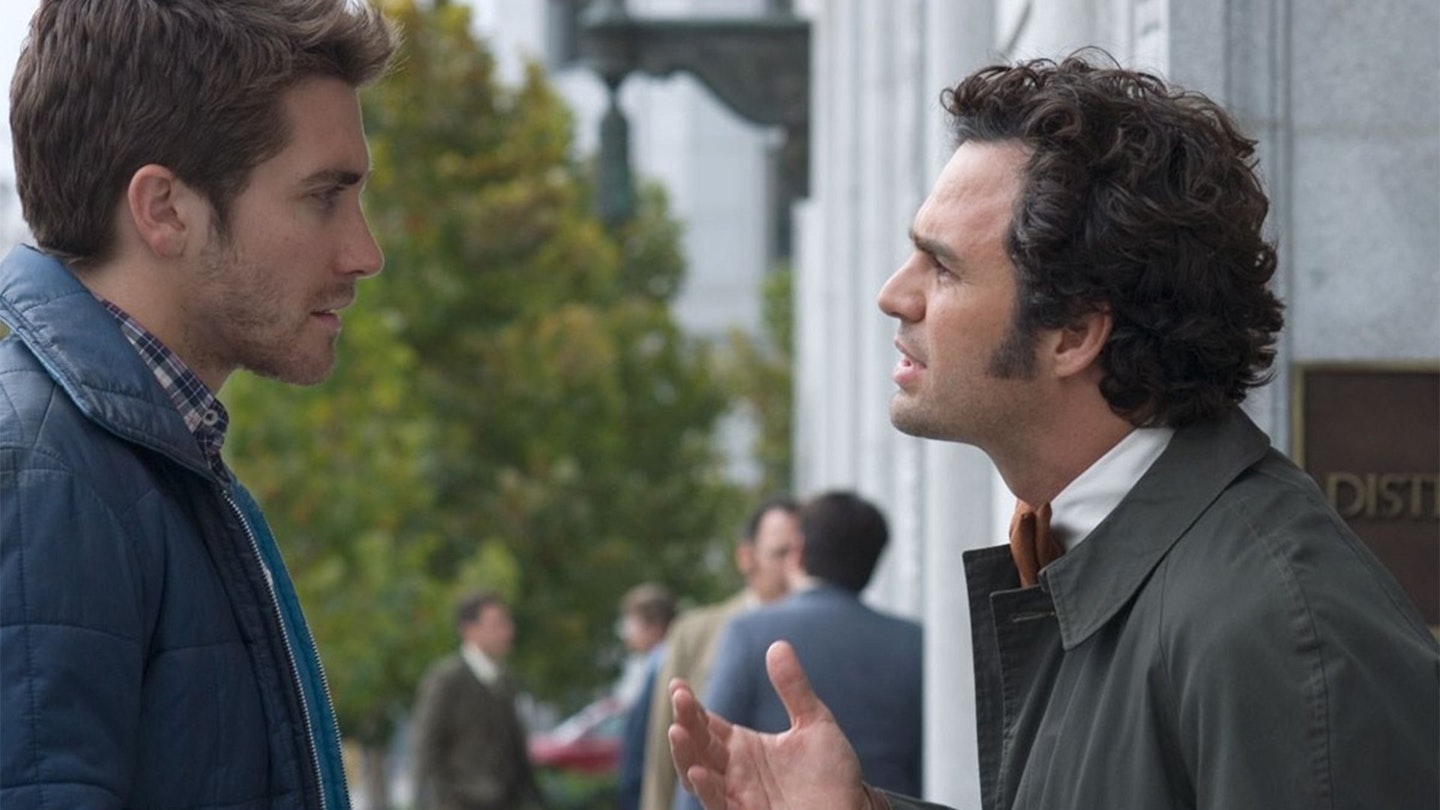
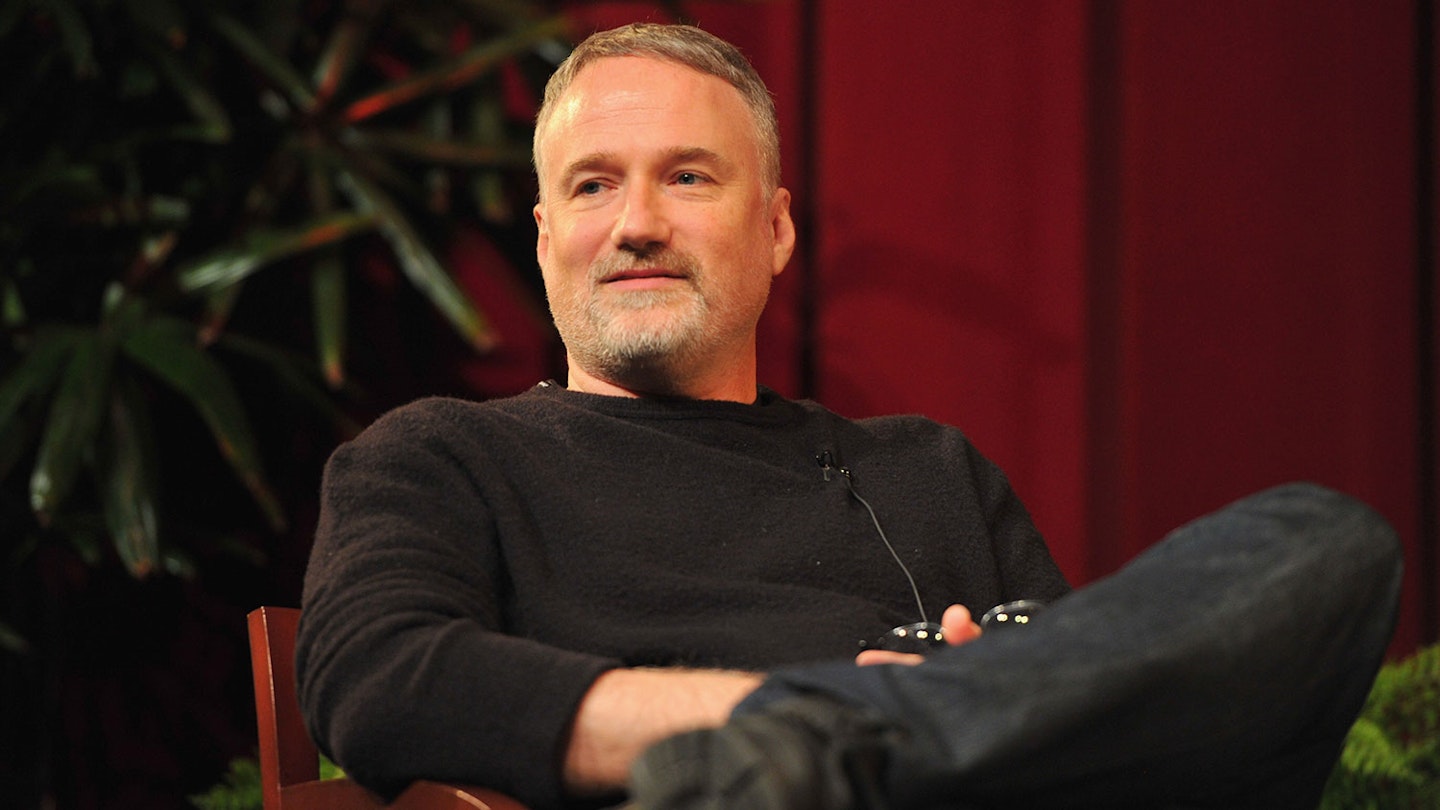
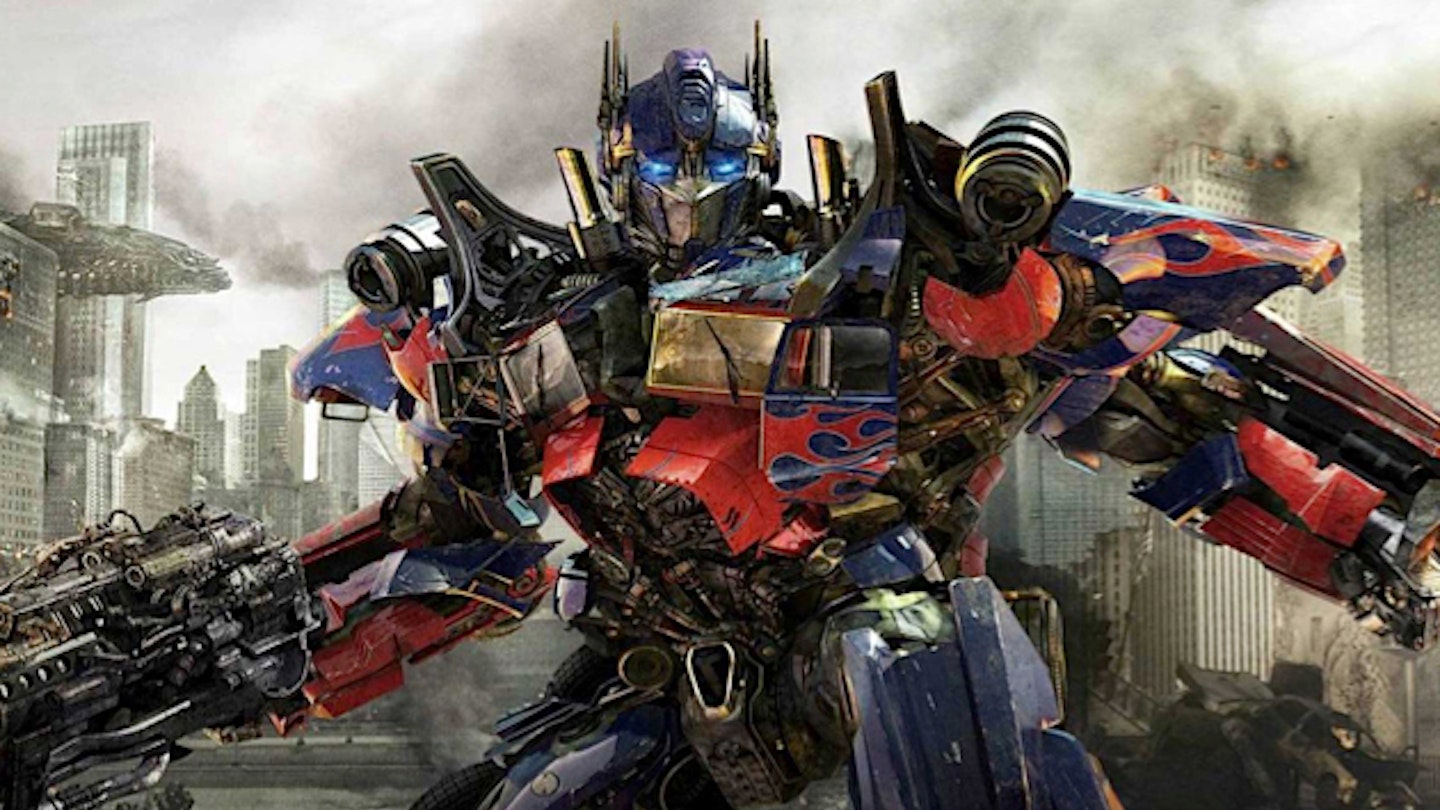
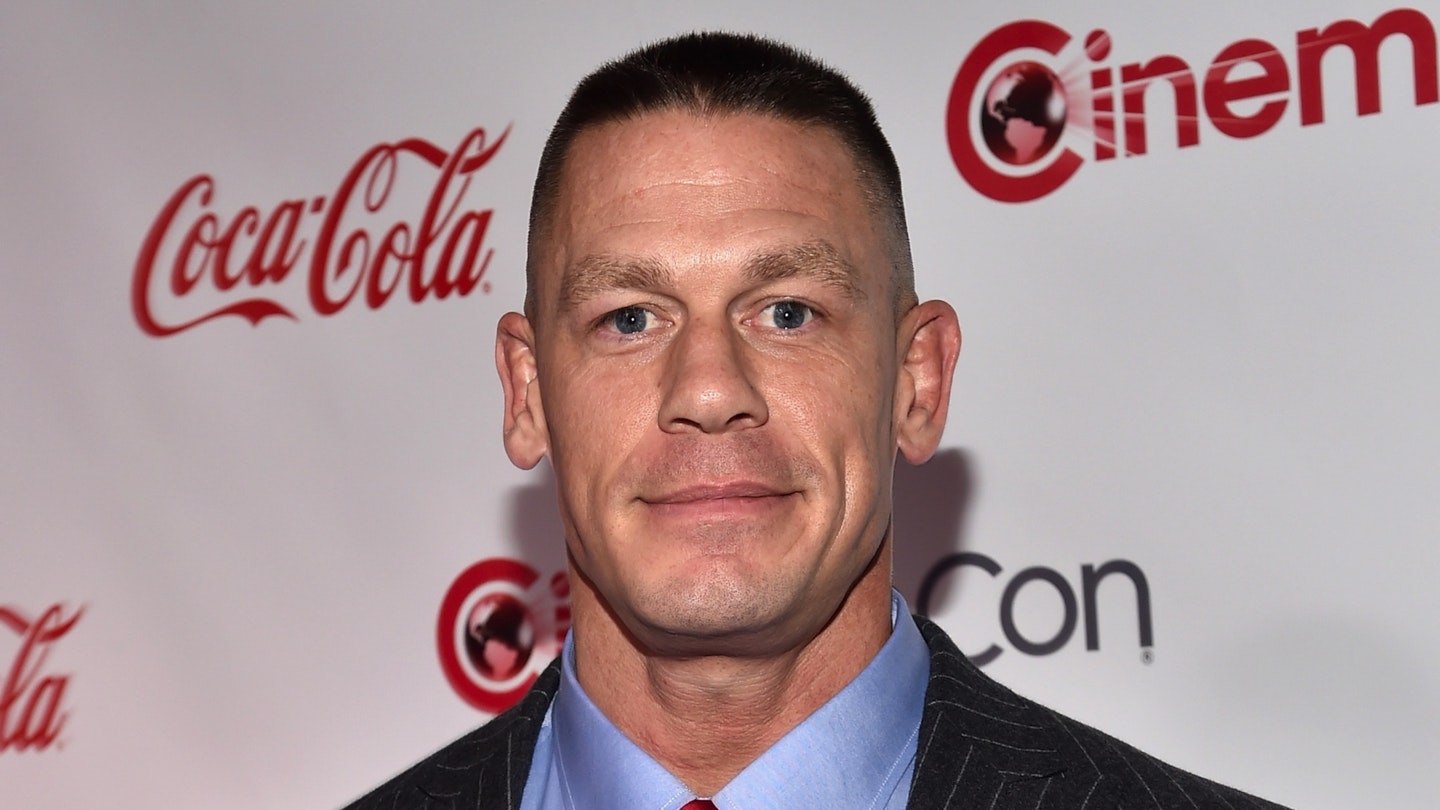
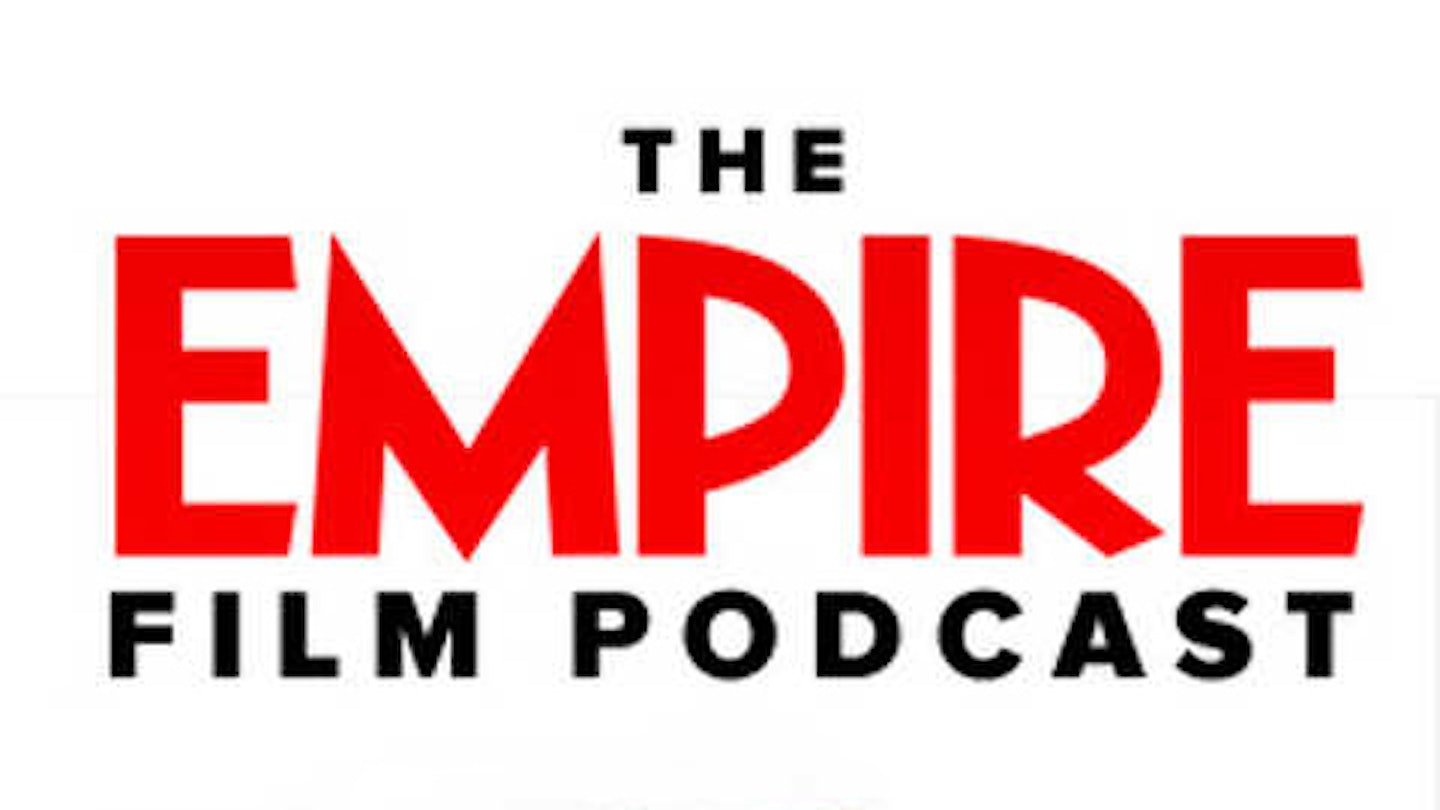
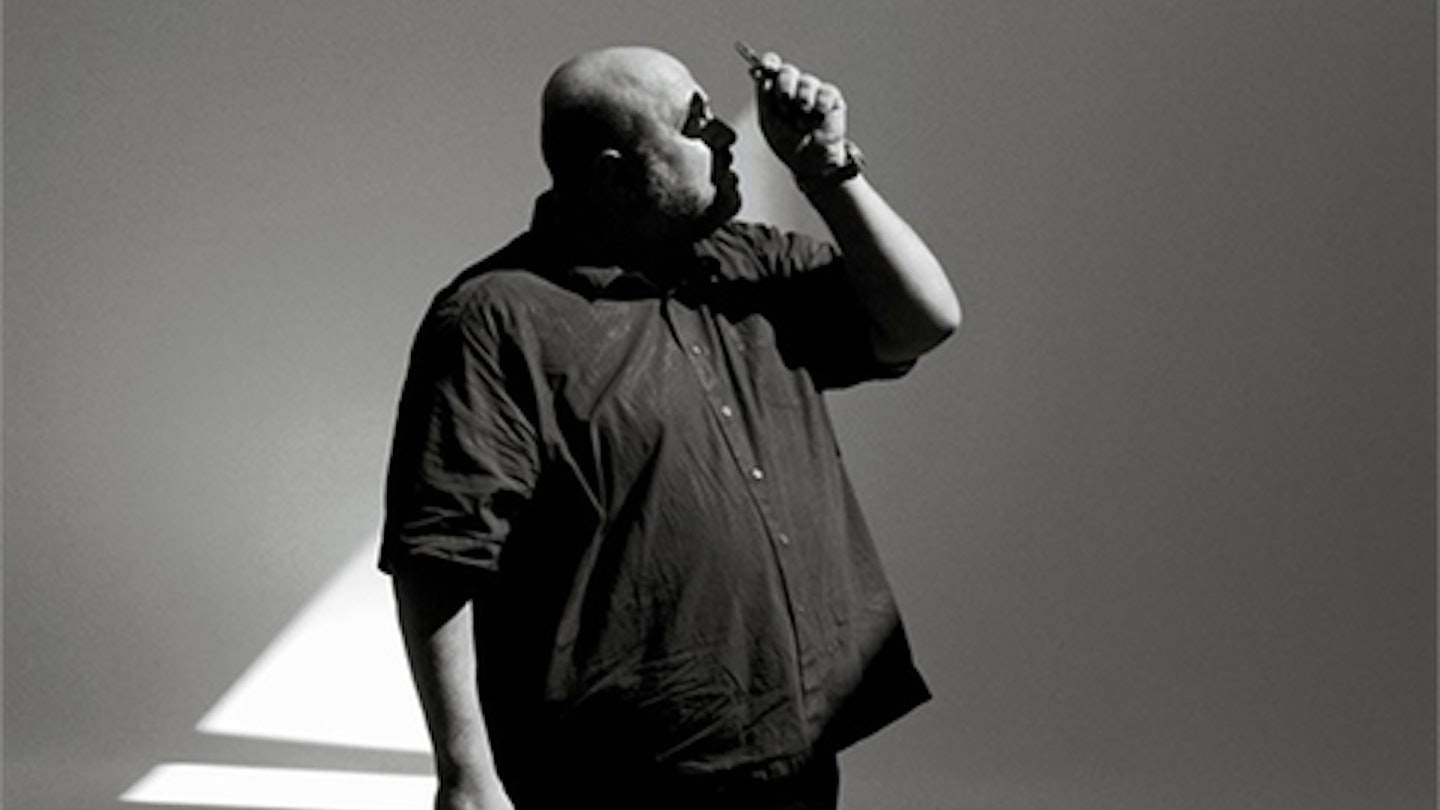
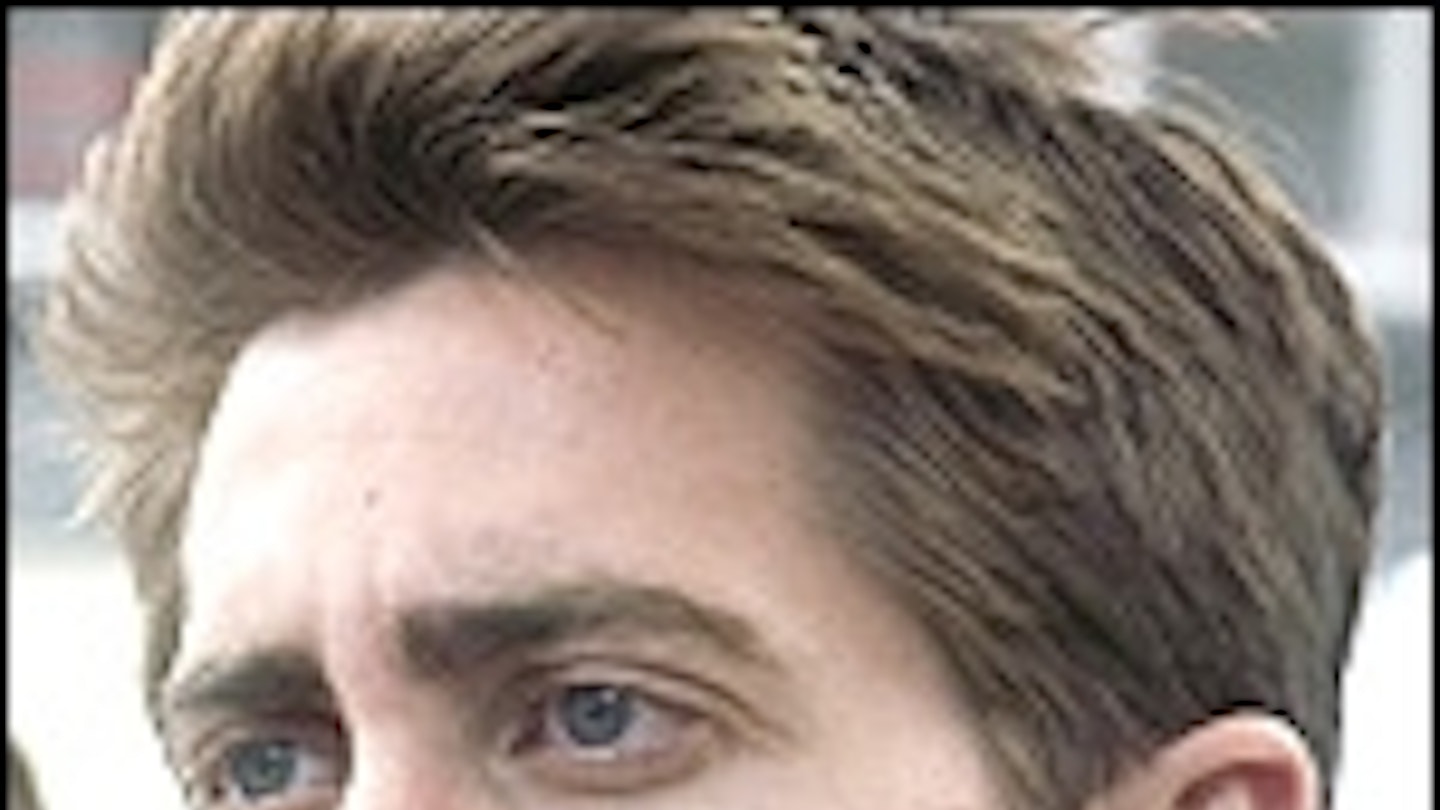
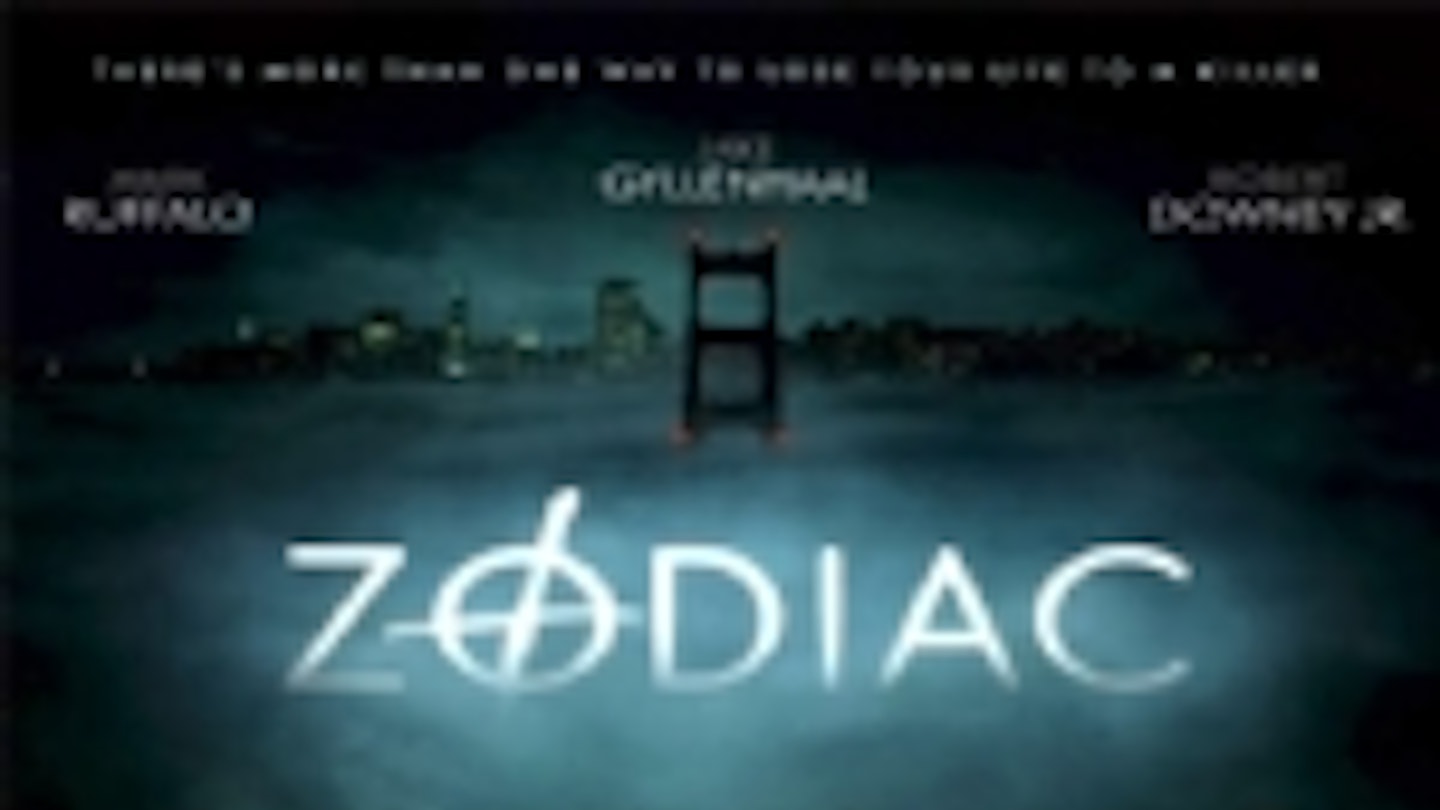

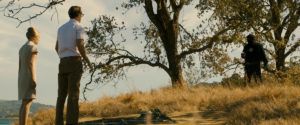

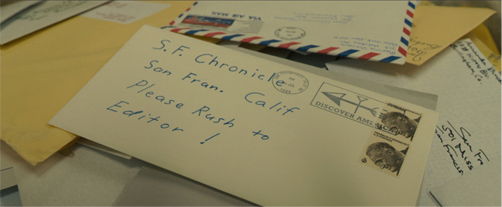
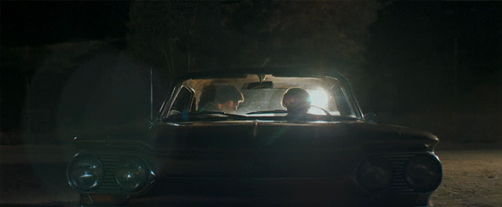
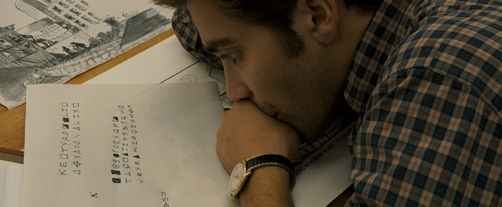
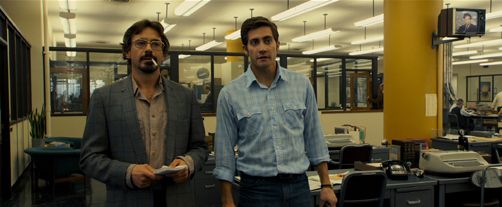
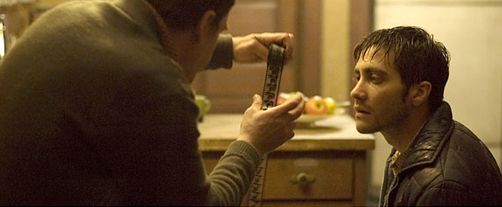
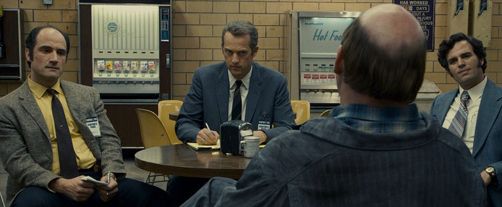
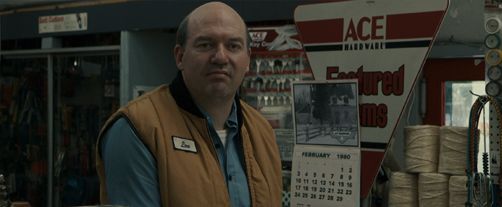
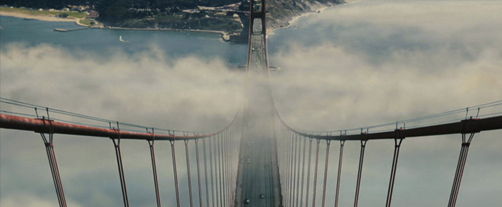



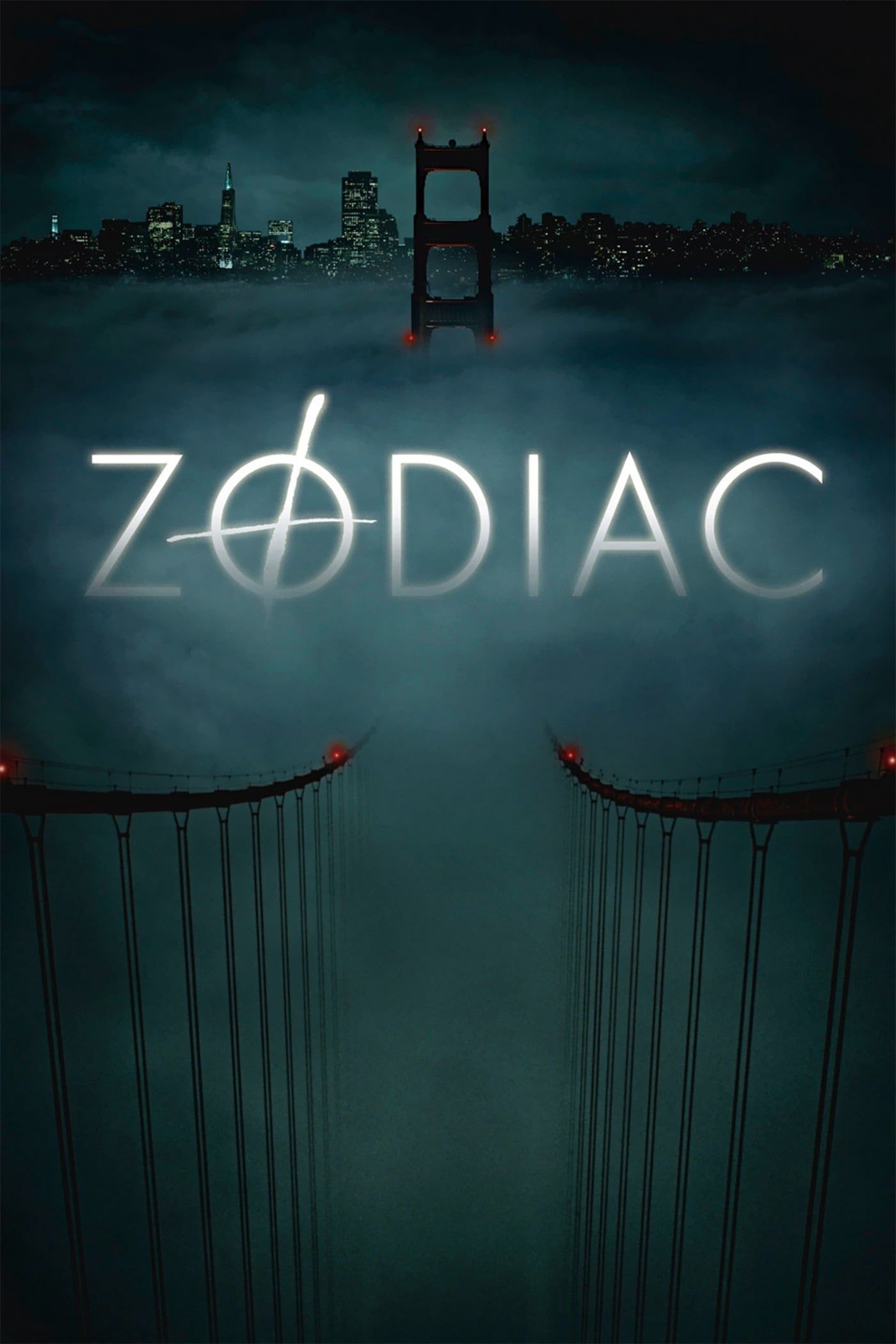
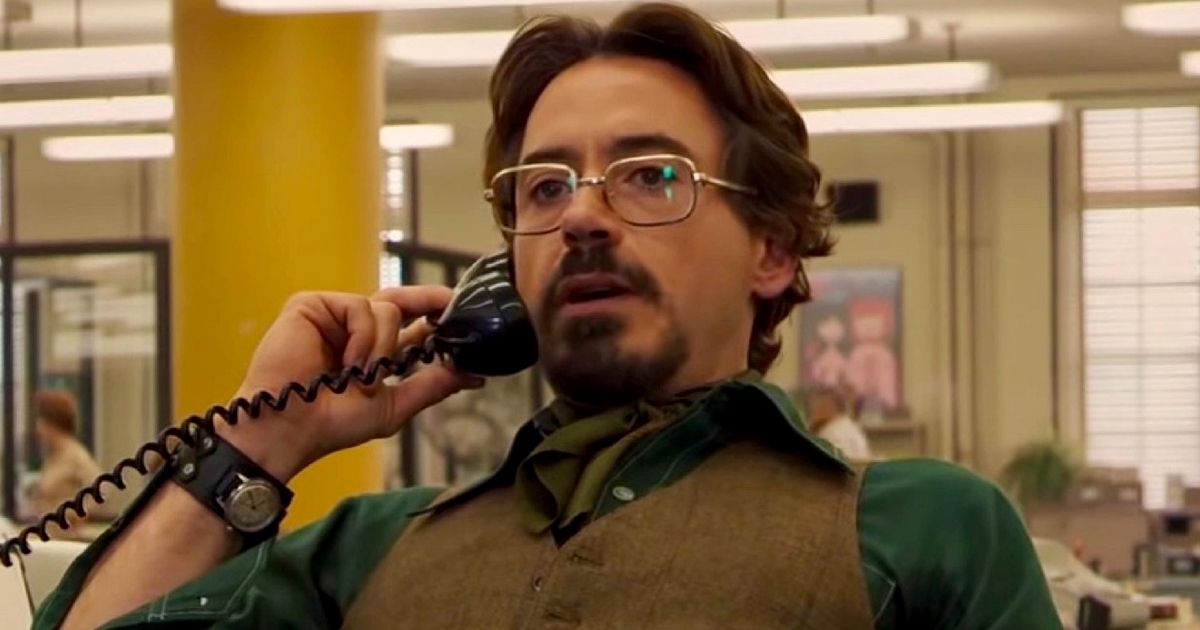
COMMENTS
Zodiac. A cartoonist (Jake Gyllenhaal, left) teams up with an ace reporter (Robert Downey Jr.) to track down an elusive serial killer in Zodiac. Director David Fincher, an elegant stylist, finds the right pace and style for a story about persistence in the face of evil. 'Zodiac" is the "All the President's Men" of serial killer movies ...
In the late 1960s and 1970s, fear grips the city of San Francisco as a serial killer called Zodiac stalks its residents. Investigators (Mark Ruffalo, Anthony Edwards) and reporters (Jake ...
NYT Critic's Pick. Directed by David Fincher. Crime, Drama, History, Mystery, Thriller. R. 2h 37m. By Manohla Dargis. March 2, 2007. David Fincher's magnificently obsessive new film, "Zodiac ...
Zodiac: Directed by David Fincher. With Jake Gyllenhaal, Mark Ruffalo, Anthony Edwards, Robert Downey Jr.. Between 1968 and 1983, a San Francisco cartoonist becomes an amateur detective obsessed with tracking down the Zodiac Killer, an unidentified individual who terrorizes Northern California with a killing spree.
Zodiac (film) - Wikipedia ... Zodiac (film)
The real-life Zodiac Killer, a shadow that haunted Northern California in the late 1960s and early '70s, is a figure shrouded in mystery. The movie draws inspiration from the killer's enigmatic ciphers and taunting letters, which you can explore in detail at the FBI's Zodiac Killer case file. Plot Overview: A Tangled Web of Clues
evanston_dad 26 March 2007. "Zodiac" may frustrate viewers who come to David Fincher's latest film expecting a traditional serial killer thriller. The film begins with a couple of hair-raising and rather brutal recreations of murders carried out by the mysterious killer who terrorized the San Francisco Bay area in the late 1960s and early 1970s.
Zodiac is a film that really takes its time, but does a masterful job of showing how these killings didn't just destroy the lives of the victims and their families, but how the case became a ...
Zodiac (2007): Film Review. Zodiac is David Fincher's take on the investigative thriller, an astute character study that's driven forward by the dark truth of the killer's crimes. Unlike many procedural thrillers of its time, David Fincher's Zodiac unlocks the secret of the genre by never relying too heavily on the facts to make this ...
Based on the actual case files of one of the most intriguing unsolved crimes in the nation's history, Zodiac is a thriller from David Fincher, director of "Seven" and "Fight Club." As a serial killer terrifies the San Francisco Bay Area and taunts police with his ciphers and letters, investigators in four jurisdictions search for the murderer. The case will become an obsession for four men as ...
A movie review by James Berardinelli. Zodiac is a police procedural - a sort of souped-up, ultra-long episode of Law & Order. Based on the 1986 "true crime" book by Robert Graysmith, the movie looks back on one of the nation's most sinister unsolved crimes: the Northern California serial killings by the so-called "Zodiac killer."
The Movie Review: 'Zodiac' By Christopher Orr. July 30, 2007. ... Later, we find cop Toschi at a special screening of Dirty Harry, a film loosely based on the hunt for the Zodiac killer (in it ...
David Fincher's film Zodiac is a retelling of the story of the infamous Zodiac killer, who remains unidentified to this day. The Zodiac killer murdered multiple people in the late 1960s and early ...
Zodiac Movie Review
Zodiac True Story Explained: Was Arthur Leigh Allen ...
The movie takes its specifics from Robert Graysmith, who was involved in the events as he was a cartoonist at the newspaper the Zodiac Killer frequently sent letters to and Graysmith became obsessed with solving the case. Fincher's Zodiac is a well-researched movie that tries to stay as close to the truth as possible, but of course, there are a ...
Zodiac: How The Movie Compares To The Real Life Cases. David Fincher's 2007 crime-thriller, Zodiac, creates a narrative out of the real-life crimes of the titular serial killer, who was active in Northern California in the late 60's and early 70's. While the notoriously unsolved Zodiac case consists of seven confirmed victims, the killer claims ...
Movie Review. Counting two books and a battery of interviews among its source materials, Zodiac digs under the skin of the story of a real-life serial killer who terrified the public and perplexed law enforcement in the San Francisco Bay Area beginning in 1969. On Aug. 1 of that year, three local newspapers received letters claiming responsibility for several fatal shootings and another ...
The mystery of the Zodiac Killer ... Eric also oversees the Movie Reviews section, writes the the weekend box office report (published Sundays), and is the site's resident Stephen King expert. He ...
Low-key but all the more compelling for it, "Zodiac" is the first must-see movie of 2007. "Zodiac" runs 160 minutes and is rated R. For Entertainment Weekly's take, click here .
158 minutes. Certificate: 15. Original Title: Zodiac. Jack The Ripper is remembered 120 years after he put down the knife for two reasons: a) someone (almost certainly not him) wrote taunting ...
From the late 1960s to early 1970s and beyond, Zodiac Killer hysteria rattled the San Francisco Bay Area of northern California. With several confirmed attacks and numerous others attributed to his name, the self-titled Zodiac claimed to have 37 victims; however, just three men and two women died by either gunshot or stabbing, while another two were seriously injured but escaped.
One of life's greatest mysteries is the identity of the Zodiac Killer. The famous serious killer was active between 1968 and 1969, and all these decades later the identity of the assailant has ...
The Zodiac (film)
Netflix has acquired the three-part docuseries "This is the Zodiac Speaking," which promises new insight about the unsolved murder case of the Zodiac Killer. The series, which comes from Ample ...